Tamron 50-400mm outdoor review and test pictures
Updated 2022-09-26: added scene 7
Updated 2022-09-27: added evaluation of chromatic aberration
Updated 2022-09-30: added day 2 scenes
Updated 2022-10-02: added actual use part
Updated 2022-10-05: added Moon shots part
Updated 2022-10-09: added Moon with landscape shots, reworded conclusion section
Comparison of new Tamron 50-400/4.5-6.3 Di III VC VXD with Sony 100-400/4.5-5.6 GM and Sigma 100-400/5-6.3 DG HSM Contemporary Canon-mount on MC-11 (so not the newer one that is native E-mount with “DN” in name) and Sony 24-105/4 G, Sony Zeiss 55/1.8 and Sony 85/1.8G.
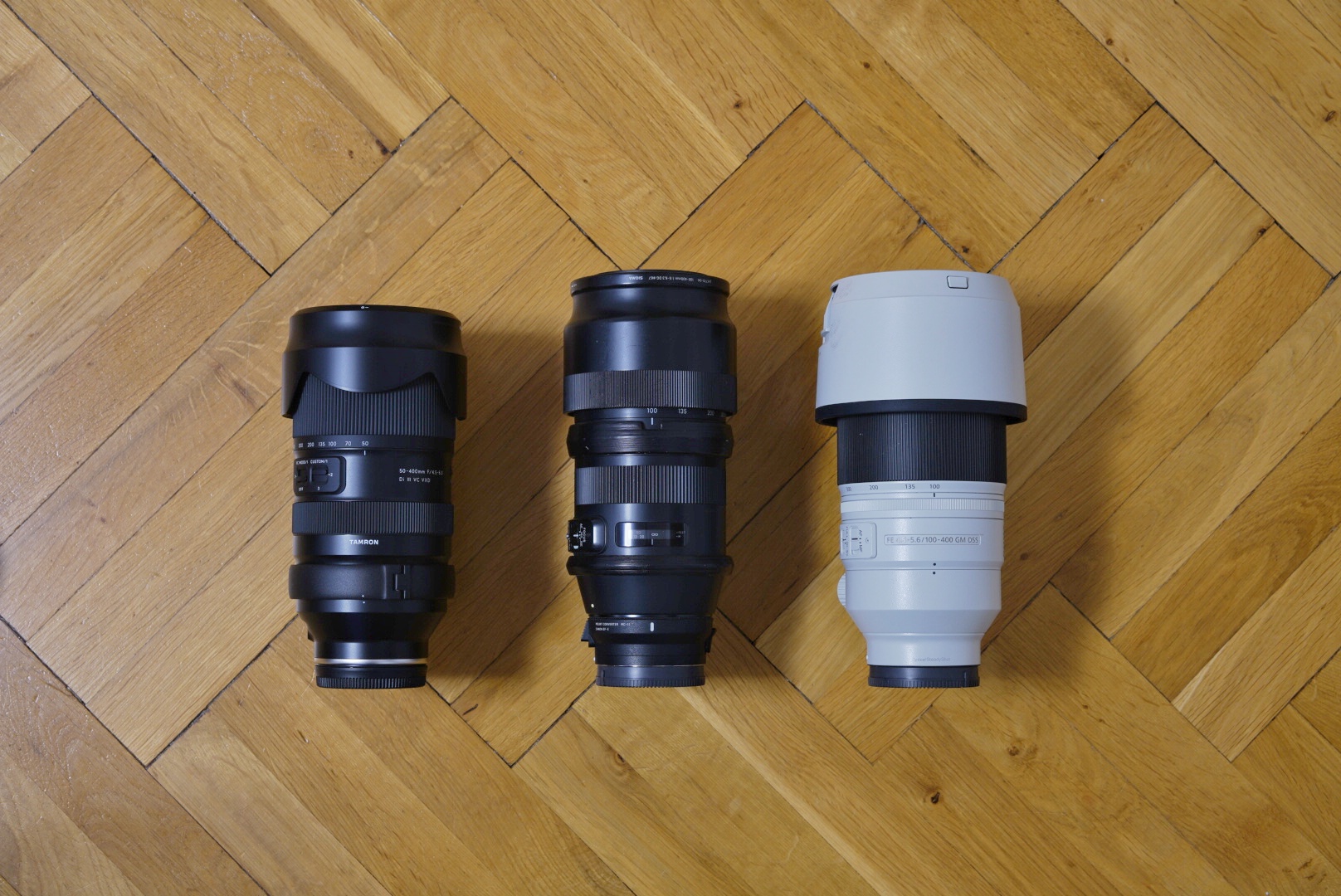
Outdoor tests
Compared are images with outdoor views at landscape apertures, everything at f/8 unless stated otherwise.
Shooting conditions
This is not a test chart shoot. There are all kinds of variables that affect image quality that would not be there in a more controlled indoor environment using a test chart. But I am not buying lenses to shoot test charts anyway.
So there are some focus differences. For 400mm shots I tried both focus in center and bottom corners with Tamron as it was showing field curvature in test chart shots, but I did not notice a difference in outcome as it was dwarfed by other things.
Lighting conditions were changing slightly between lens changes.
Framing changed a bit.
Air quality was not great in terms of contrast for distant subjects, it was not bad either. More importantly, the optical distortion of light through uneven air heat was relatively low. Consecutive images showed minor effects in local distortion. Most of the pictures except few initial wides were shoot on the hill which helps with this.
There was a weak wind with occasional gusts. This has an impact on both lens stability and on the target which is mostly trees. At f/8 shutter speeds were often 1/30s for ISO 100. I have used an electronic shutter which has a scan time of 1/10s on A7Riv in 14 bit sampling modes. So wind can change causing the top and bottom part of the image to be impacted differently. On the other hand, the advantage of electronic shutter is no added vibration in serial shooting. I have used bluetooth remote to activate shutter so there is no added vibration from that, still many times I have seen that first picture in series after touching camera (to zoom) was slightly weaker than others.
Lens stabilization was turned off as it sometimes has a negative impact on a tripod. It also causes different framing between pictures that makes it harder to compare. I have used a Gitzo GK100T tripod with legs fully extended and center column not extended and a GH1382TQD ballhead.
All the long lenses had hood attached, but 24-105 was without it.
Image processing
All images were shot as 14 bit uncompressed raws. All corrections in camera were turned off. ARW raws were converted into DNG using Adobe tool, then imported to LR 5.7. The CA correction is turned off.
Some images are processed, in that case all in the series are processed the same. There no local adjustments, only global adjustments to exposure, highlights, shadows and white balance. Export is with screen-low sharpening, sRGB with JPG size limit 12MB.
Zoom warning
These lenses are zooms and A7Riv has very high resolution. It can record even minor differences in lenses performance. Zooms generally have varying image quality over the range and things like field curvature and tilt vary through the zoom range. Most likely your copy of same lens model is not all the same.
Image selection
I could make any of the lenses look bad by selecting below average image. I have generally selected best image the lens took in each series (based on subject near center). Usually I had 2 to 10 pictures from each lens in the series. This is important for longer focal lengths which are much more affected by air heat distortion, wind shaking the lens even on a good tripod and focus variation. Sometimes it was not completely fair because I had more pictures from one lens than other to choose from which can increase chance of good one.
Viewing images
Full resolution images are provided. Images are copyrighted © 2022 Jakub Trávník. You can use them personally for comparison of lenses and you can use them to support discussion on the lenses by posting image comparisons based on them in online discussions. Best way to compare is to have a software for viewing that can show 1:1 crops from specific area of several images (e.g. LR can do that). As images are taken on high resolution camera with 60MP, you may find much lower difference in lens image quality on lower megapixel camera like 24MP.
Scenes Day 1
Day 1 - Scene 1 - 50mm
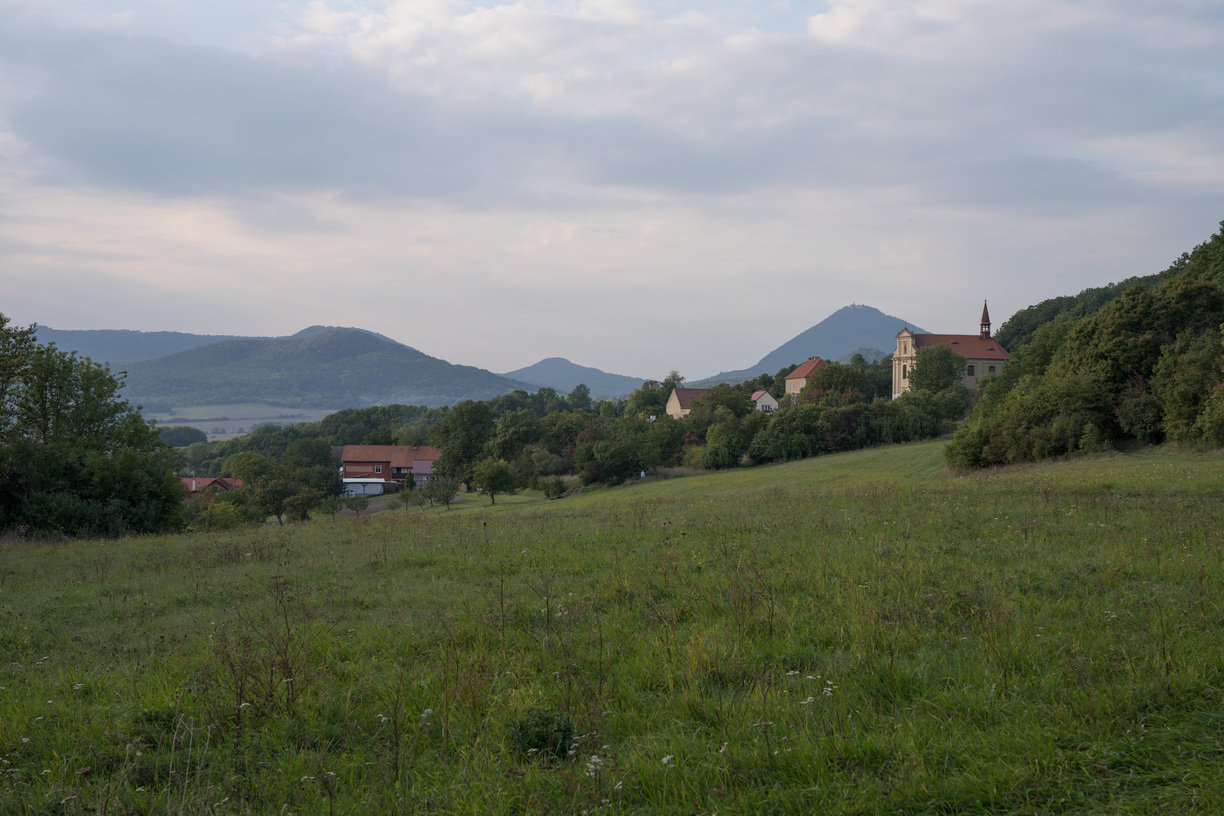
Images are here: JTR_48 mm_FE 24-105mm F4 G OSS_07500.jpg JTR_50 mm_E 50-400mm F4.5-6.3 A067_07523.jpg JTR_50 mm_E 50-400mm F4.5-6.3 A067_07524.jpg
Comments: there are two shows with 50-400 with different focus distance, 24-105 focused slightly closer than far focus image of the 50-400 so I assume that minor difference in sharpness is caused by that. On the right side at horizon, 50-400 far-focus image looks worse than 24-105, but closer focus image of 50-400 is actually great there which means there is stronger field curvature on that side at this focal length. Overall: both lenses performed ok.
Day 1 - Scene 1 - 70mm
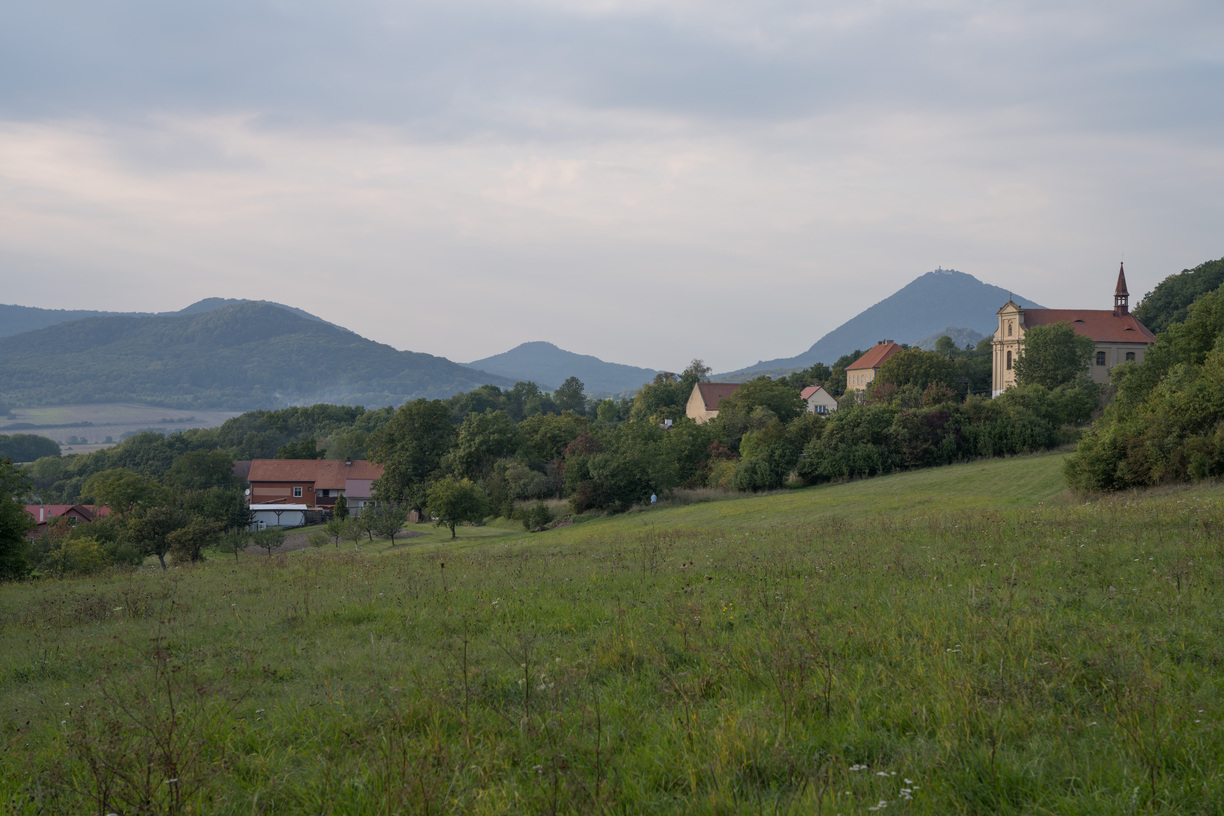
Images are here: JTR_68 mm_FE 24-105mm F4 G OSS_07504.jpg JTR_70 mm_E 50-400mm F4.5-6.3 A067_07526.jpg
Comments: very slightly better performance from 50-400 over 24-105. Unsure if that was caused by fine focus difference or not.
Day 1 - Scene 1 - 100mm
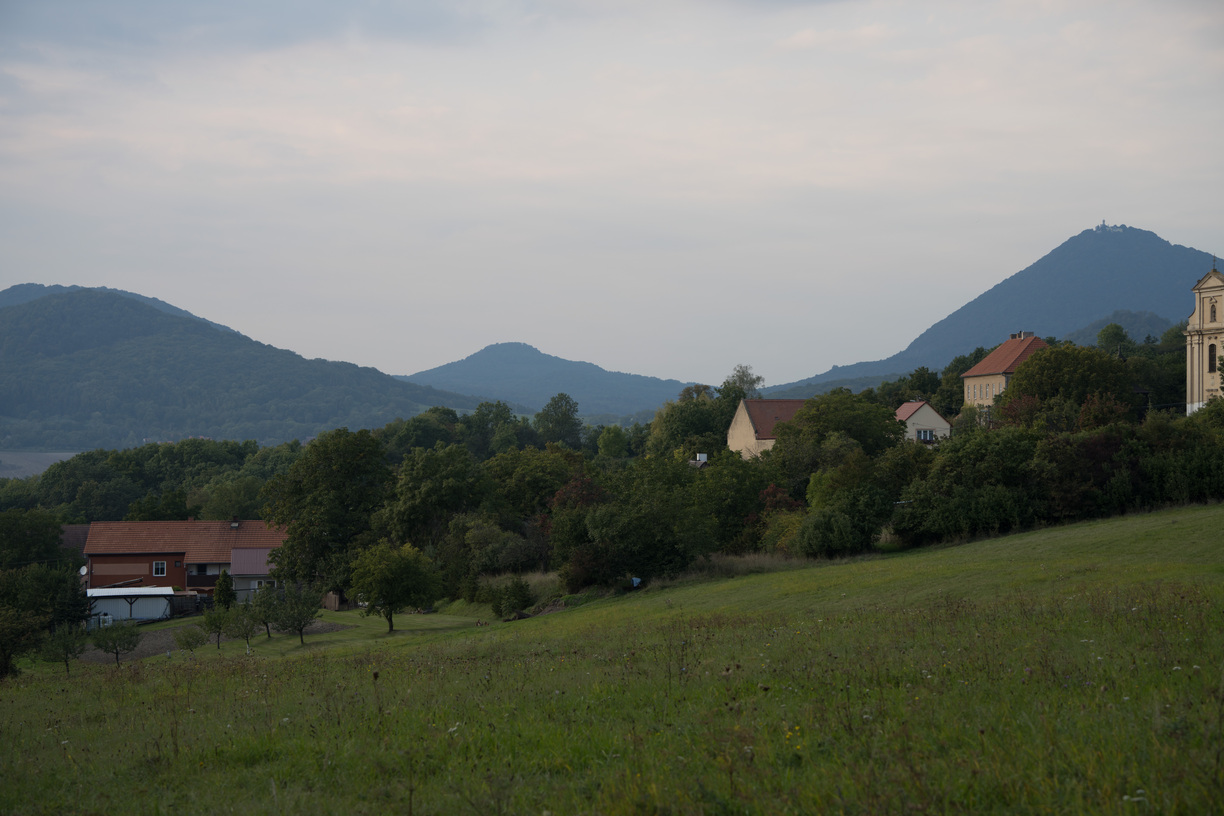
Images are here: JTR_100 mm_E 50-400mm F4.5-6.3 A067_07537.jpg JTR_99 mm_FE 24-105mm F4 G OSS_07518.jpg
Comments: basically same performance.
Day 1 - Scene 2 - 50mm
No images processed. This was high contrast scene with sun just outside of top of frame. Flare was well controlled on 50-400, 24-105 had some area near mid-bottom brighter from flare, but that one did not have hood so it would not be fair comparison.
Day 1 - Scene 3 - 50mm
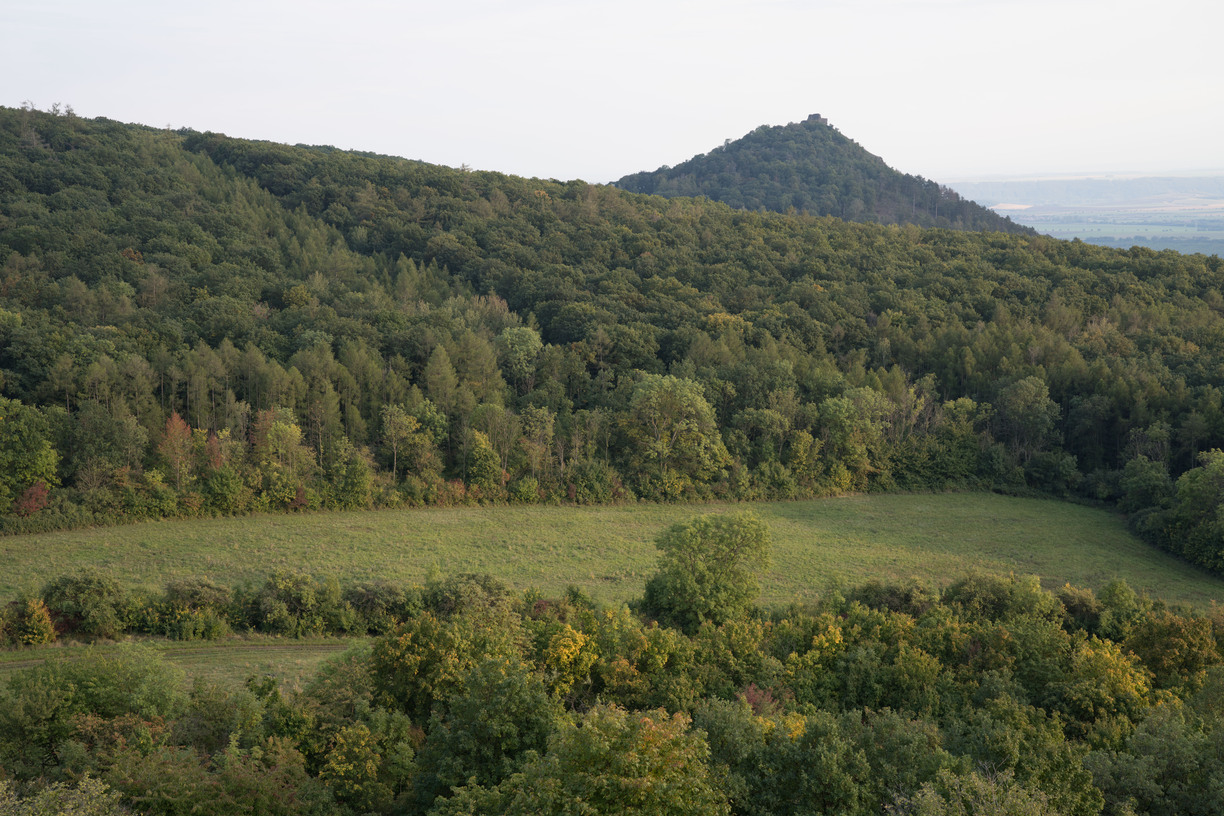
Images are here: JTR_49 mm_FE 24-105mm F4 G OSS_07583.jpg JTR_50 mm_E 50-400mm F4.5-6.3 A067_07588.jpg
Comments: 50-400 slightly better than 24-105 everywhere except bottom right corner where 50-400 showed weak performance or it was out of focus due to field curvature.
Day 1 - Scene 3 - 70mm
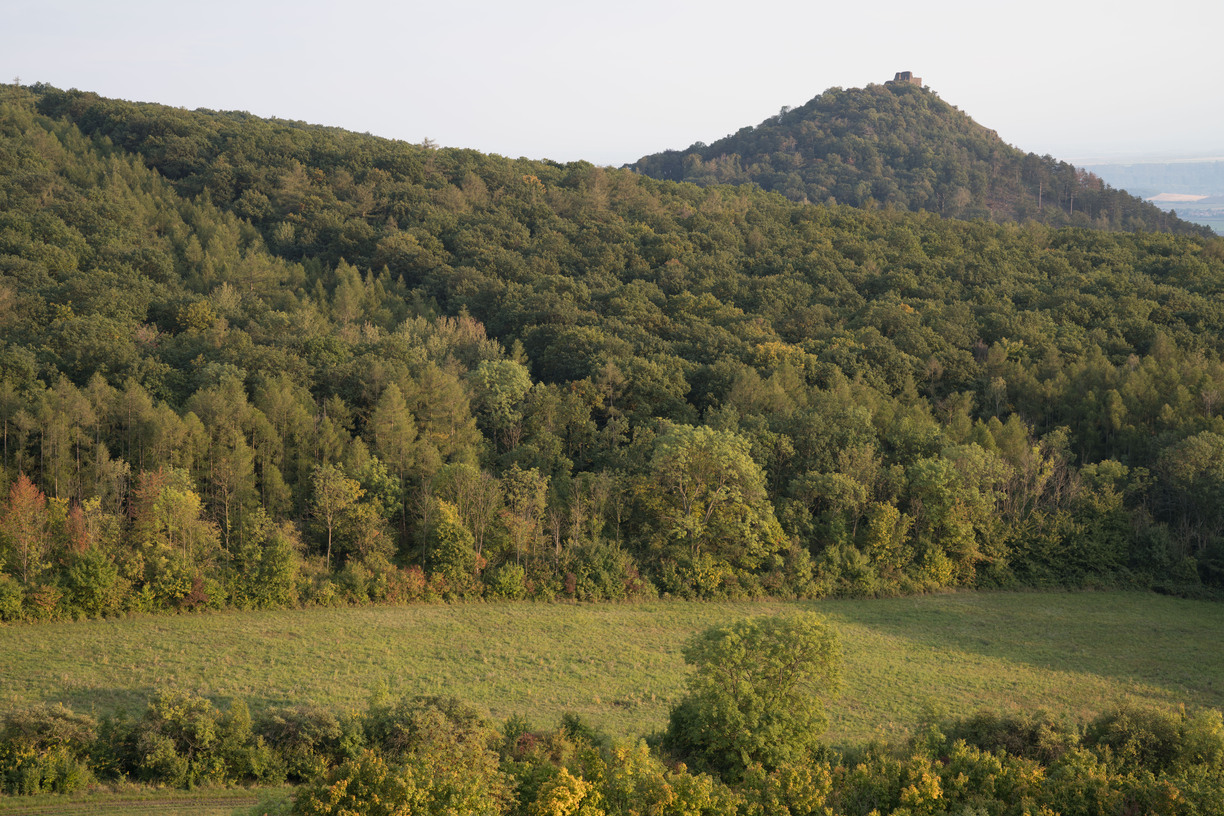
Images are here: JTR_69 mm_FE 24-105mm F4 G OSS_07601.jpg JTR_71 mm_E 50-400mm F4.5-6.3 A067_07599.jpg
Comments: very similar performance everywhere, though 24-105 was a bit weaker near right side of image.
Day 1 - Scene 3 - 100mm
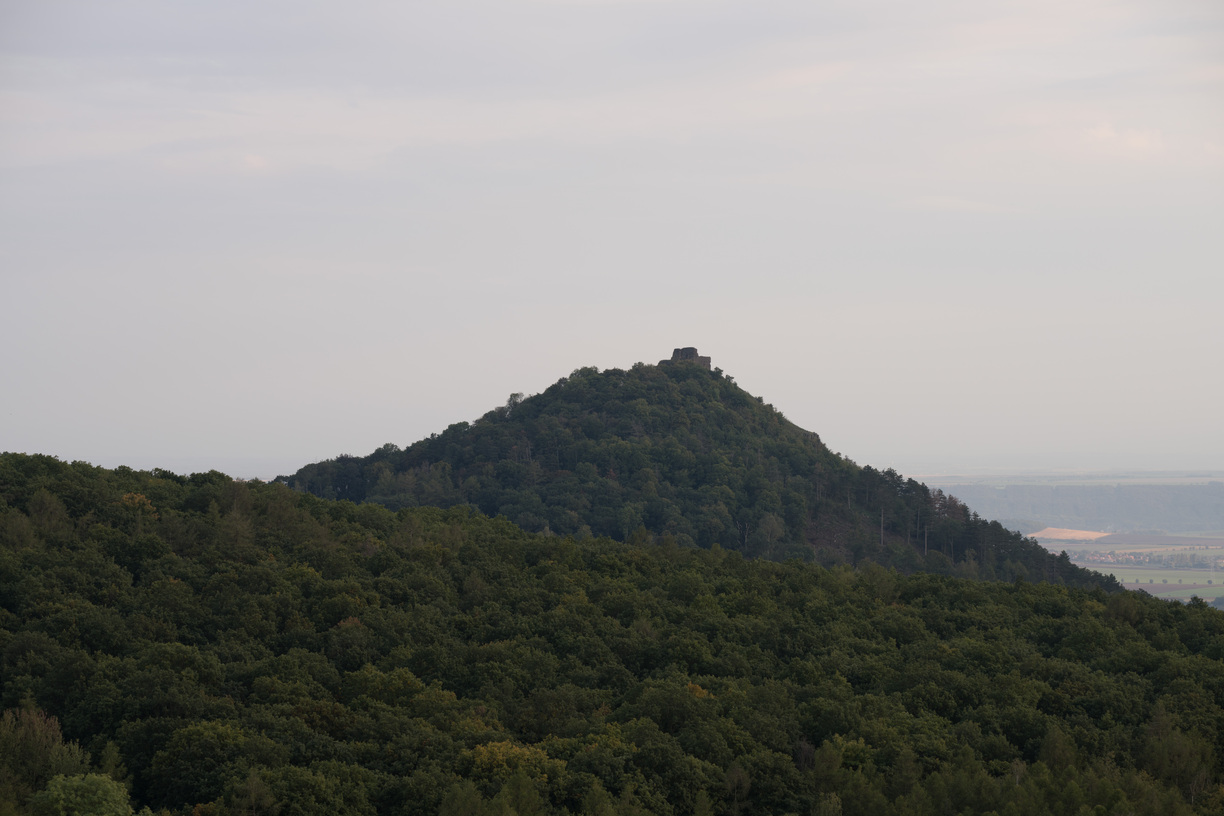
Images are here: JTR_100 mm_100-400mm F5-6.3 DG OS HSM - Contemporary 017_07657.jpg JTR_100 mm_100-400mm F5-6.3 DG OS HSM - Contemporary 017_07698.jpg JTR_100 mm_FE 100-400mm F4.5-5.6 GM OSS_07631.jpg JTR_100 mm_FE 100-400mm F4.5-5.6 GM OSS_07721.jpg JTR_102 mm_E 50-400mm F4.5-6.3 A067_07676.jpg JTR_99 mm_E 50-400mm F4.5-6.3 A067_07606.jpg JTR_99 mm_FE 24-105mm F4 G OSS_07604.jpg
Comments: As you can notice there now more images. There are now all four lenses. Except for 24-105 there are two images per lens. Each image from the same lens is from different series separated by a shoot with different lens so lens was off camera in between, also lighting changed a bit too. You can use these images to evaluate repeatability of the test.
50-400 vs 24-105: similar performance in most of the image, but 24-105 is weaker/out of focus in bottom of right side and bottom left corner.
50-400 vs Sony 100-400 GM: this is trickier to compare as there are now two images from both. GM is sharper in center, both are about same on sides, but 50-400 is a bit sharper near corners.
50-400 vs Sigma 100-400 Canon mount: Sigma is a bit sharper in center, but worse on sides and in corners.
Day 1 - Scene 3 - 150mm
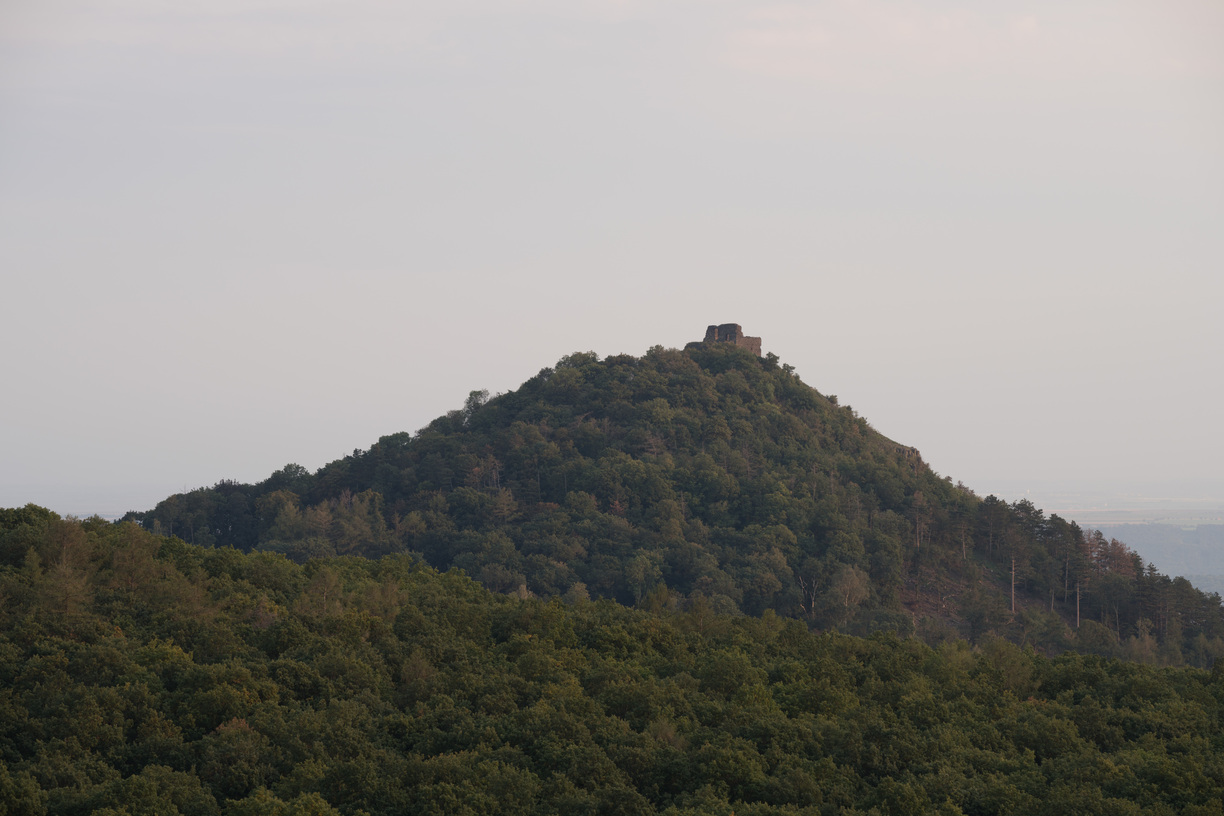
Images are here: JTR_150 mm_100-400mm F5-6.3 DG OS HSM - Contemporary 017_07705.jpg JTR_150 mm_FE 100-400mm F4.5-5.6 GM OSS_07727.jpg JTR_151 mm_E 50-400mm F4.5-6.3 A067_07682.jpg
Comments:
50-400 vs Sigma 100-400 Canon mount: Sigma is a bit sharper in center, but it has some weak areas near bottom (center bottom and corners) where Tamron is better.
50-400 vs Sony 100-400 GM: GM is sharper in center, both are about same on sides, Tamron is slightly better in corners.
Day 1 - Scene 3 - 200mm
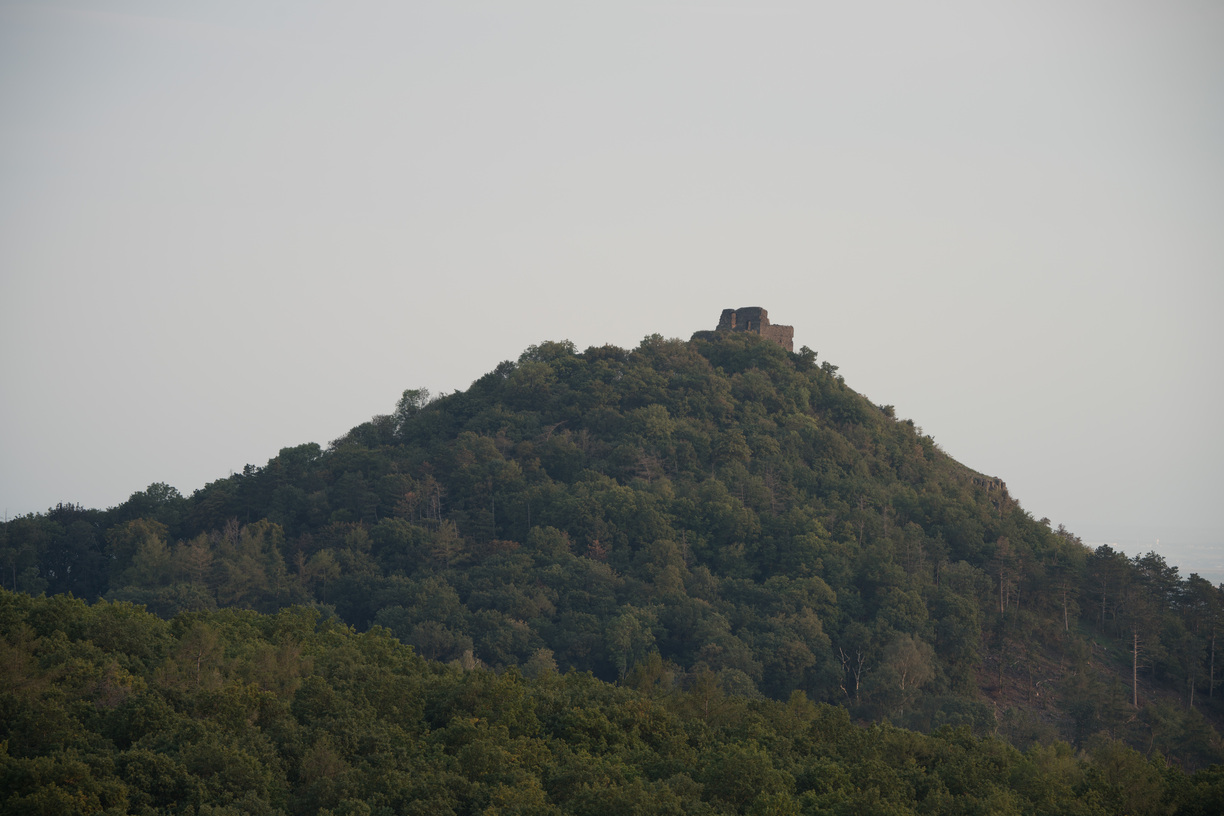
Images are here: JTR_200 mm_E 50-400mm F4.5-6.3 A067_07686.jpg JTR_200 mm_FE 100-400mm F4.5-5.6 GM OSS_07638.jpg JTR_202 mm_100-400mm F5-6.3 DG OS HSM - Contemporary 017_07708.jpg
Comments: well, it is exactly like at 150mm. Tamron is less sharp than both Sigma and Sony GM in center, but it is more sharp in sides and corners.
Day 1 - Scene 3 - 300mm
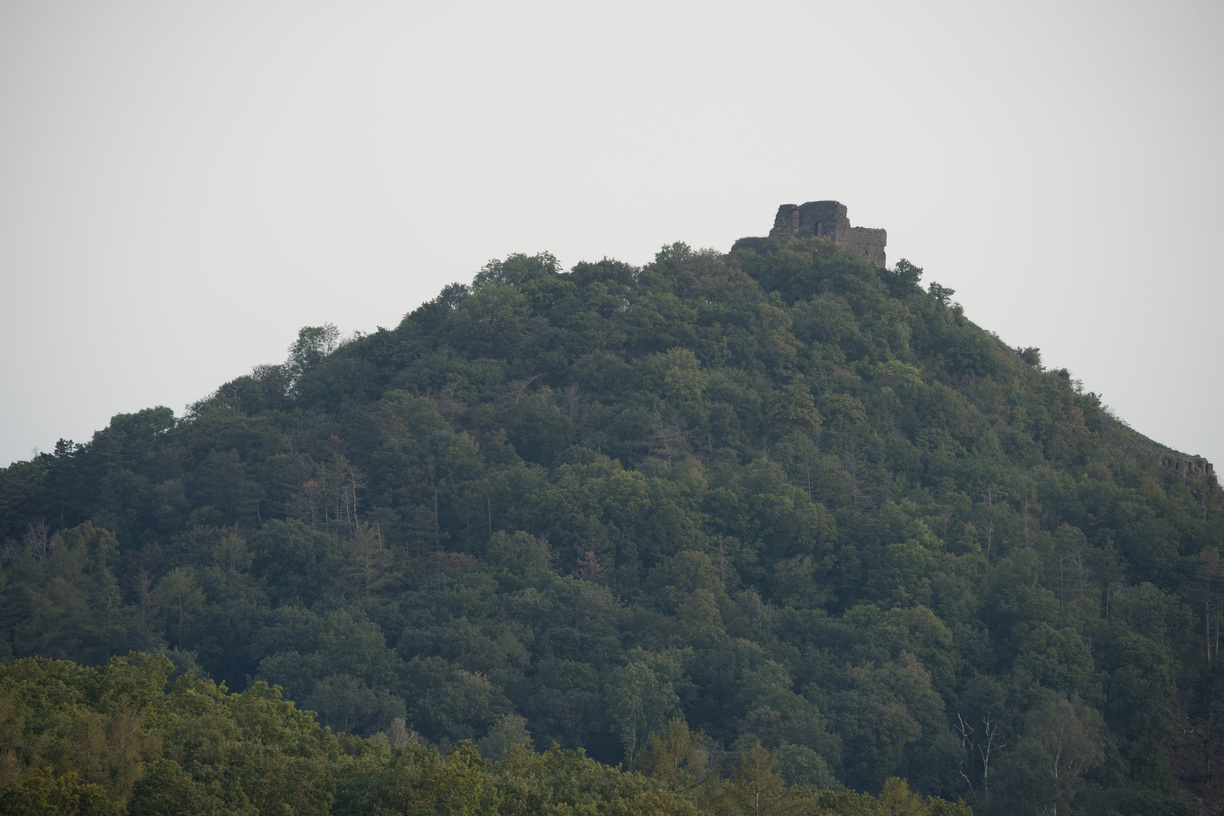
Images are here: JTR_300 mm_E 50-400mm F4.5-6.3 A067_07615.jpg JTR_300 mm_E 50-400mm F4.5-6.3 A067_07688.jpg JTR_300 mm_FE 100-400mm F4.5-5.6 GM OSS_07641.jpg JTR_302 mm_100-400mm F5-6.3 DG OS HSM - Contemporary 017_07709.jpg
Comments: there are two images for Tamron 50-400. Each one is from separate sub-series. I would have kept only one here if they would be the same, but they are not. The one with number 7688 is slightly sharper near center compared to the other, but it worse than the other one on the right side (about the same on the left side). The number 7688 is also quite bit worse on the bottom left area where the trees are much closer than the rest of the picture. I think this is the field curvature at play. With fine focus bracketing (e.g. using bluetooth remote), you could perhaps combine both exposures to have great sharpness across the field. I wonder if such bracketing would be also valuable for shorter focal lengths where center sharpness was behind other two long lenses. Of course bracketing might be helpful for other two lenses - did not evaluate that. I was just focusing with L-flexible spot in center here with all the lenses.
50-400 vs Sony 100-400 GM: GM is sharper in center than one of the Tamron pictures (number 7615) and worse in sides and corners. Compared with the other Tamron picture (number 7688) that was sharper in the center (than 7615), it is about same as GM here in the center, moreover it is sharper than GM on sides too.
50-400 vs Sigma 100-400 Canon mount: Tamron picture (number 7688) is about same in some center parts and much better at others (especially bottom). The other Tamron picture (7615) is about same in some center parts and much better at others (especially bottom).
Day 1 - Scene 3 - 400mm
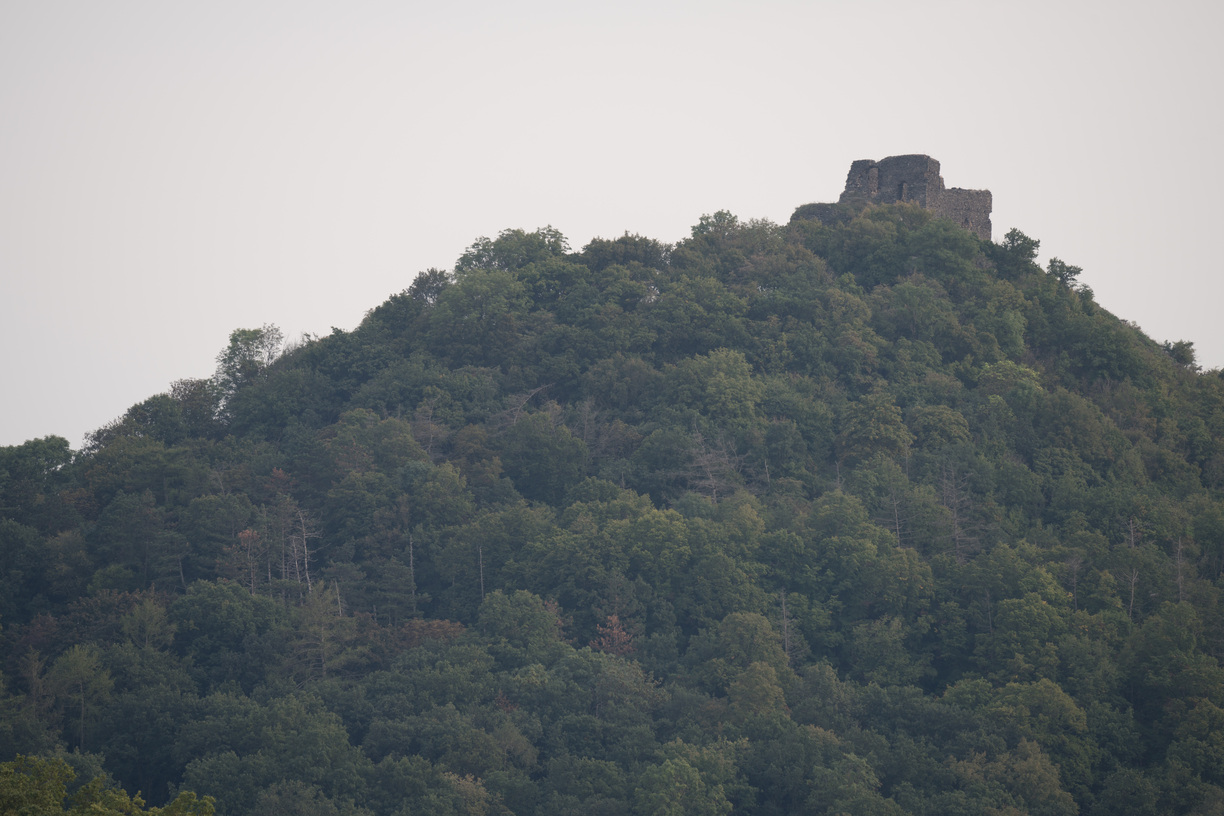
Images are here: JTR_400 mm_100-400mm F5-6.3 DG OS HSM - Contemporary 017_07667.jpg JTR_400 mm_E 50-400mm F4.5-6.3 A067_07621.jpg JTR_400 mm_FE 100-400mm F4.5-5.6 GM OSS_07649.jpg
Comments:
50-400 vs Sony 100-400 GM: both are very good everywhere, though GM is a tiny bit sharper everywhere.
50-400 vs Sigma 100-400 Canon mount: Sigma is a bit better in top left quadrant, but Tamron is a bit better in remaining three quadrants and in center.
Day 1 - Scene 4 - 50mm
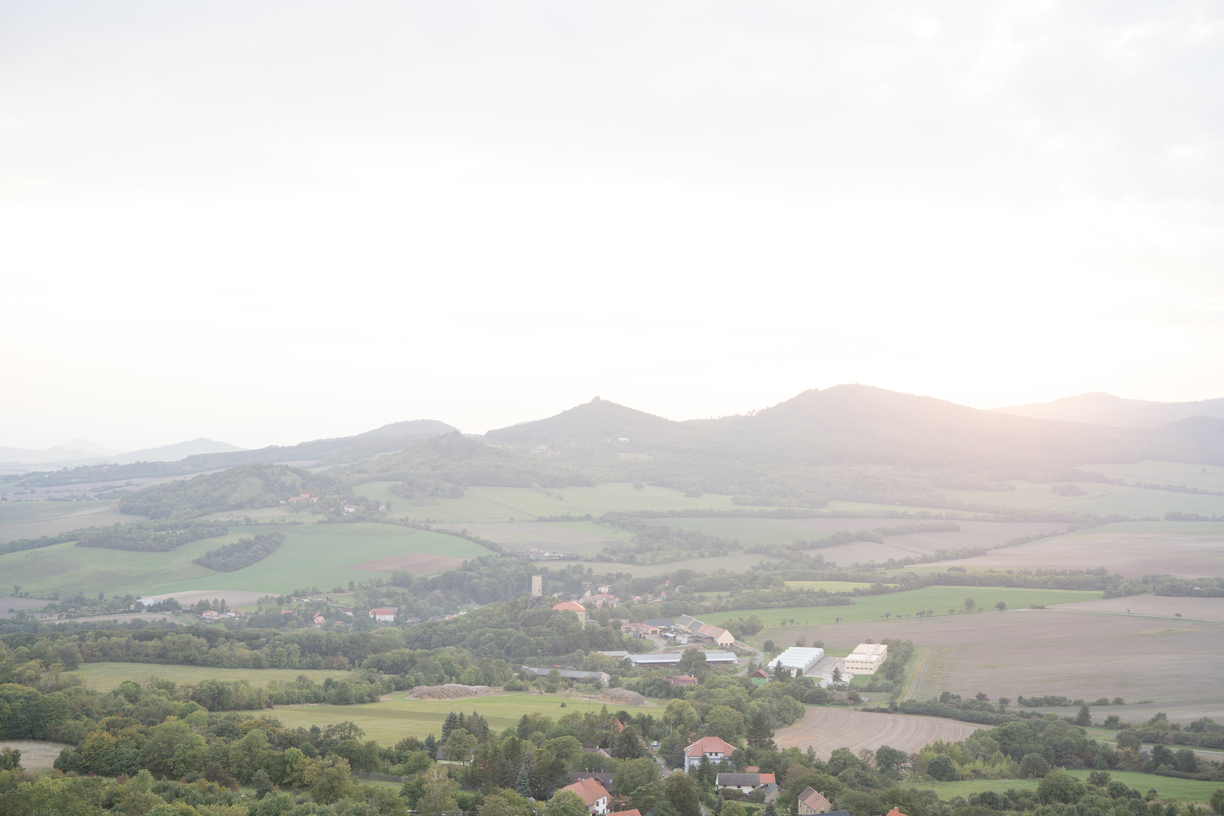
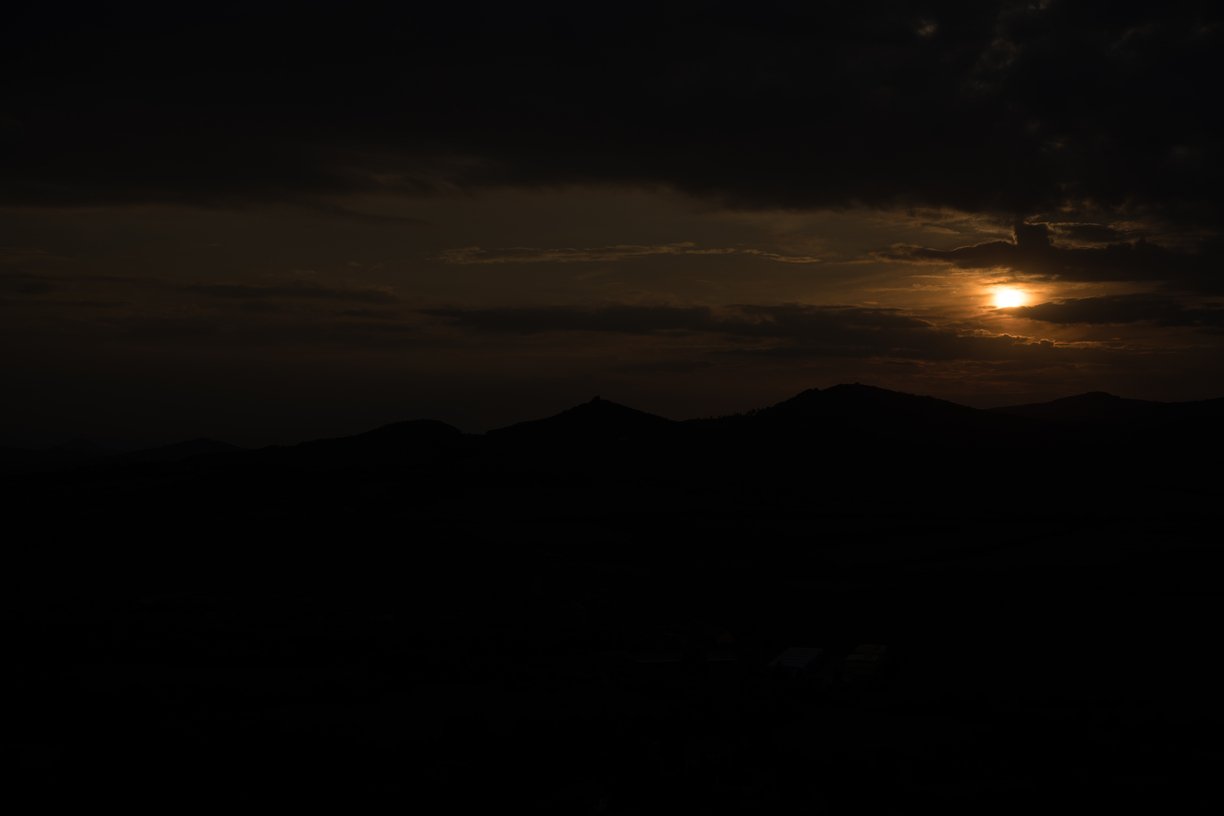
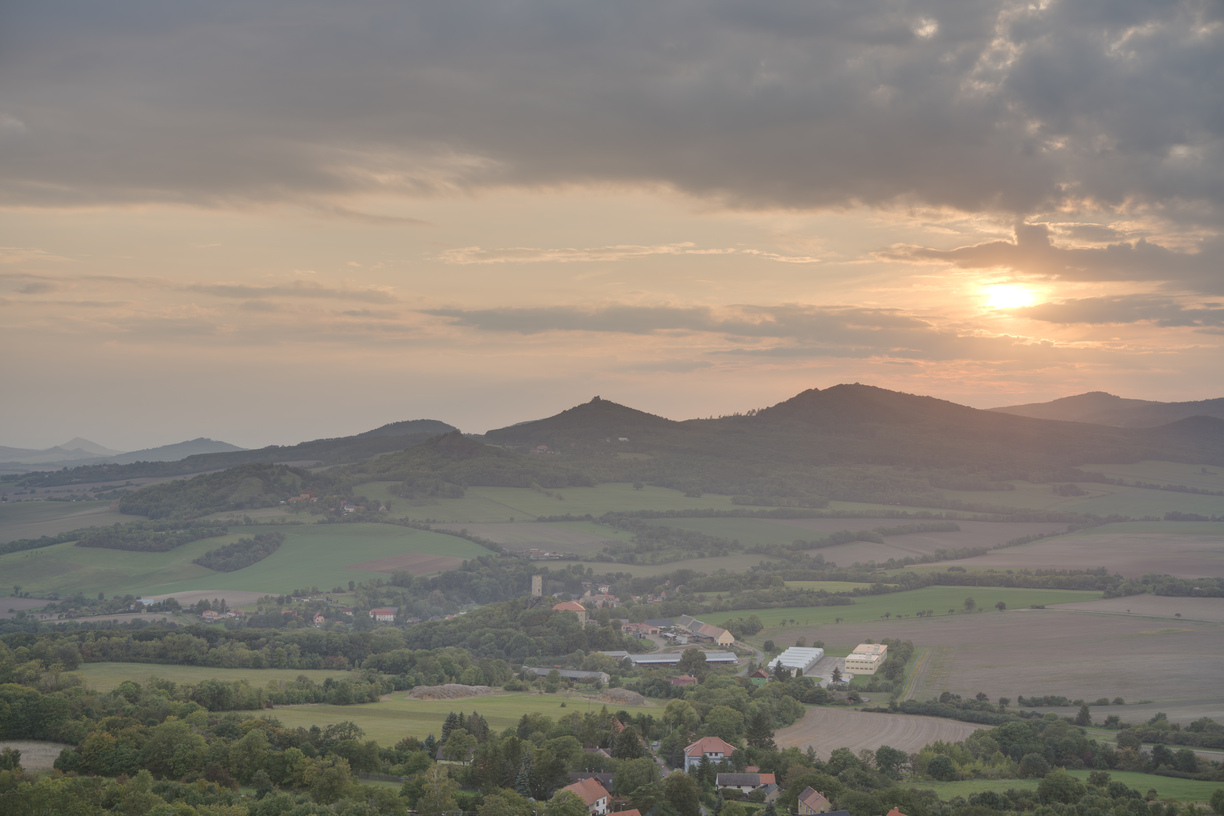
Images are here: JTR_50 mm_E 50-400mm F4.5-6.3 A067_07762.jpg (brightest) JTR_50 mm_E 50-400mm F4.5-6.3 A067_07761.jpg (darkest) JTR_50 mm_E 50-400mm F4.5-6.3 A067_07758_enfuse.jpg (Enfuse output)
Comments: this is not a comparison, there is just Tamron 50-400. This scene shows flare with sun in the picture. I have captured 5 images 2EV apart. Shown are brightest (1/10s) and darkest (1/2500s) exposures and also image produced by Enfuse (exposure merging tool) using all five images.
Despite high contrast between sun and relatively dark land, there is no bright spot on the land. Great performance.
Day 1 - Scene 4 - 70mm
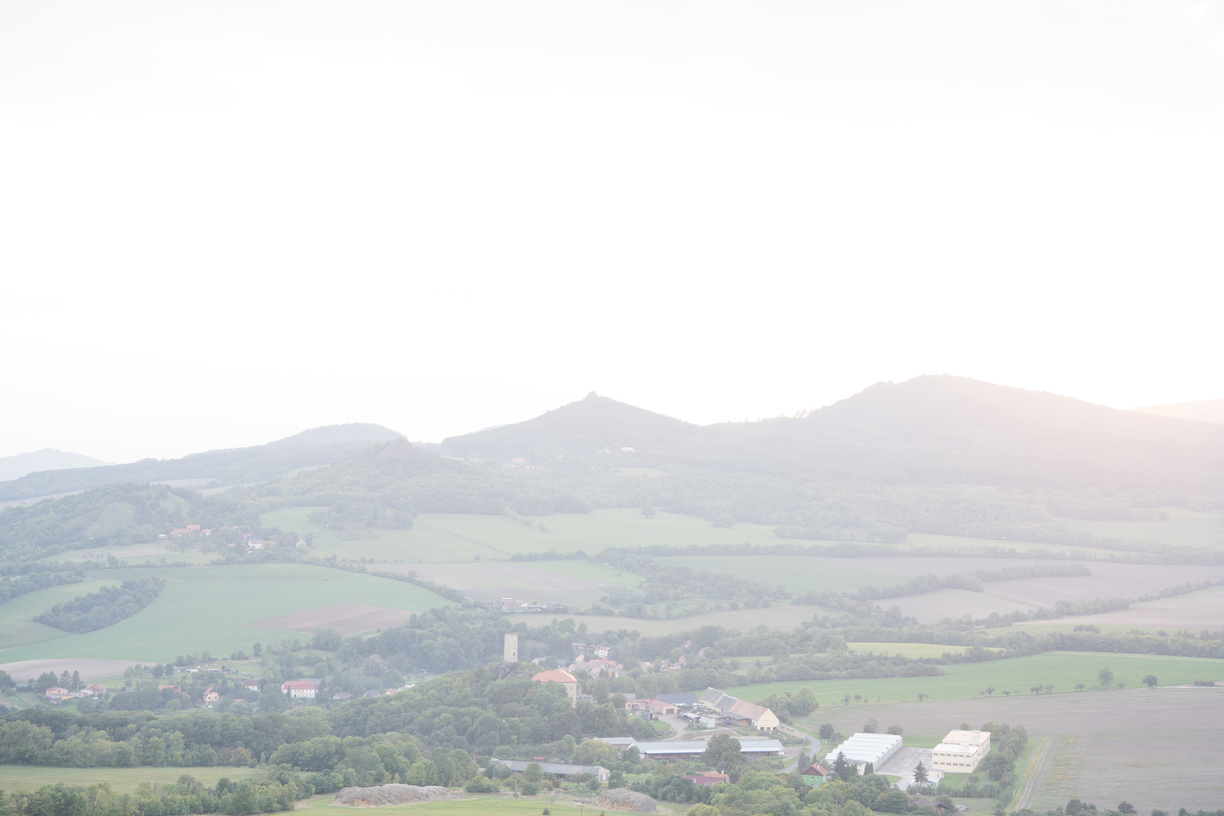
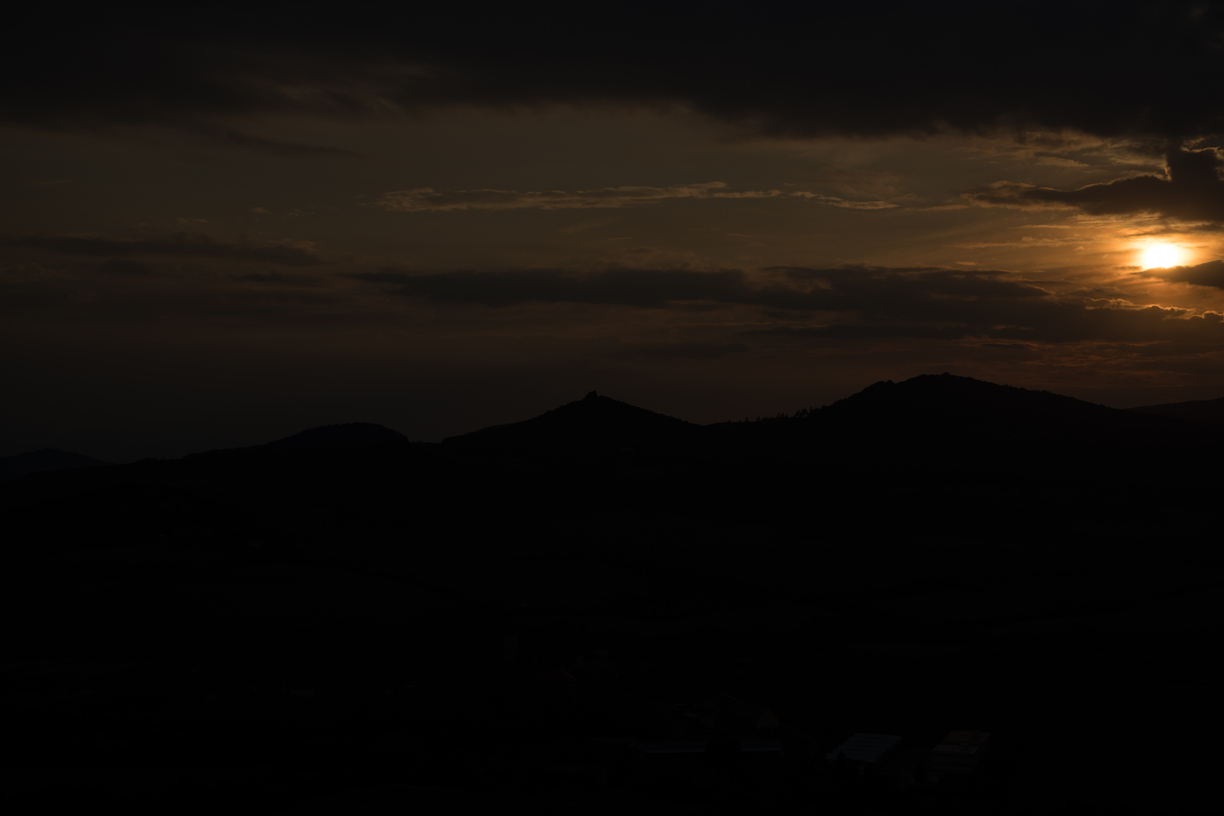
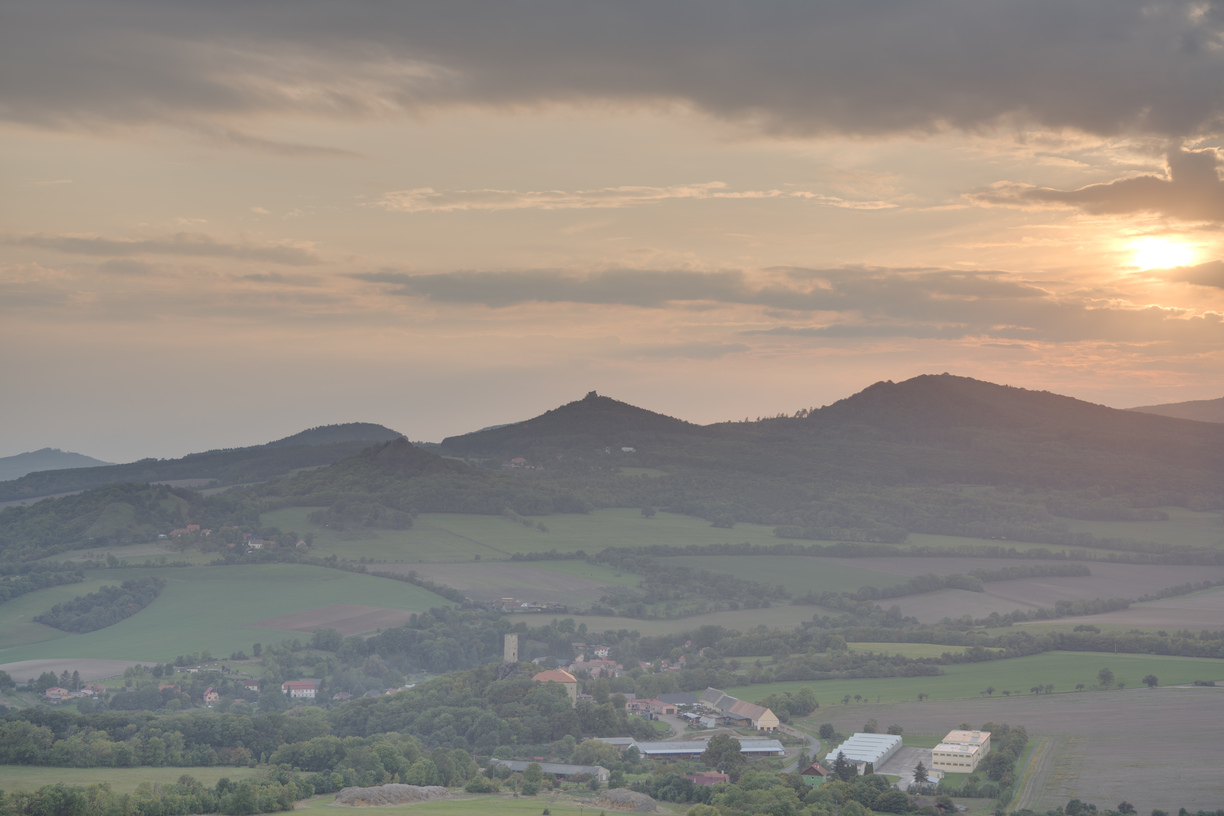
Images are here: JTR_69 mm_E 50-400mm F4.5-6.3 A067_07767.jpg (brightest) JTR_69 mm_E 50-400mm F4.5-6.3 A067_07766.jpg (darkest) JTR_69 mm_E 50-400mm F4.5-6.3 A067_07763_enfuse.jpg (Enfuse output)
Comments: same as with 50mm and also same great performance.
Day 1 - Scene 4 - 100mm
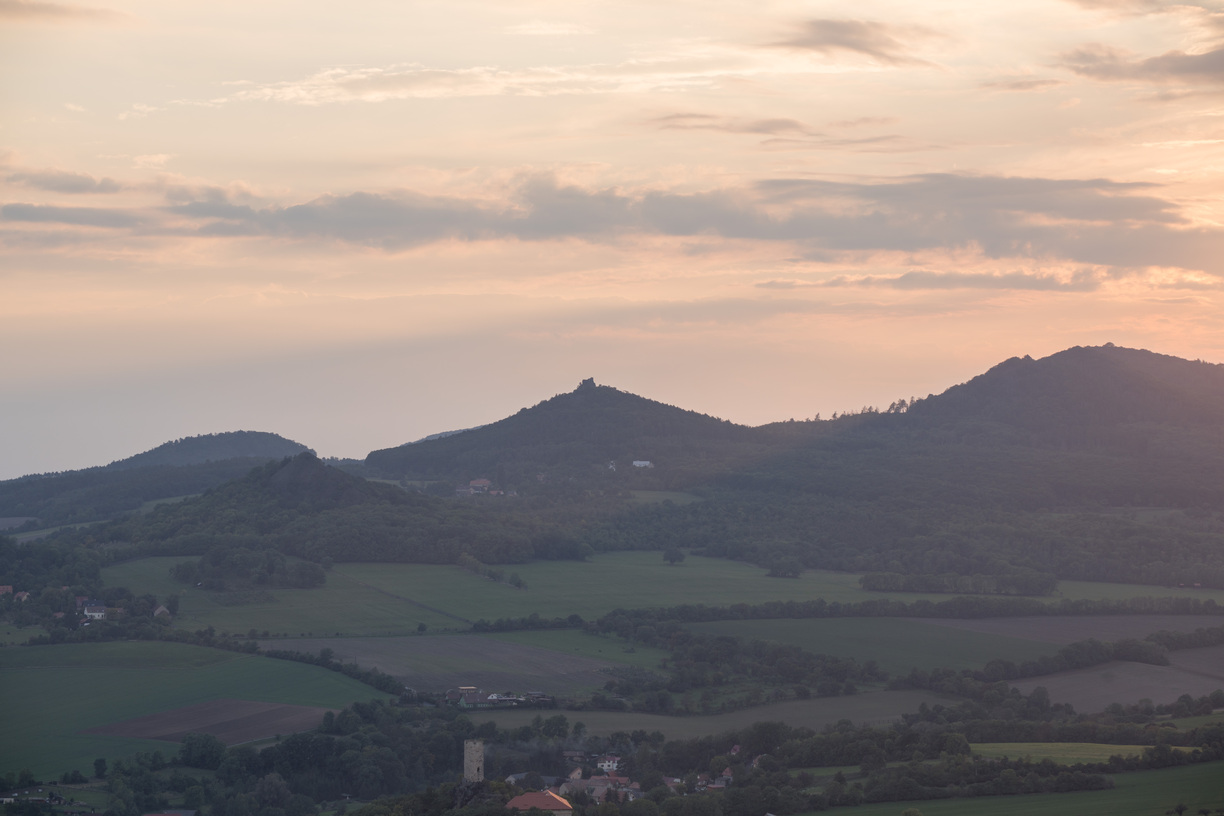
Images are here: JTR_100 mm_100-400mm F5-6.3 DG OS HSM - Contemporary 017_07789.jpg JTR_100 mm_E 50-400mm F4.5-6.3 A067_07772.jpg JTR_100 mm_FE 100-400mm F4.5-5.6 GM OSS_07742.jpg
Comments: the same scene as above, but here the sun is just outside of image frame. Multiple lens comparison again.
50-400 vs Sony 100-400 GM: going over horizon the both lenses perform well, the Sony GM is a tiny bit better in center, same on the left side and worse on the right side. Going through the land, the Tamron is a bit better near bottom right corner. Overall image quality is very similar.
50-400 vs Sigma 100-400 Canon mount: similar as in comparison with Sony 100-400 GM. The Tamron is a tiny bit worse in center. Sigma is worse in sides and corners, more so than GM.
Day 1 - Scene 4 - 150mm
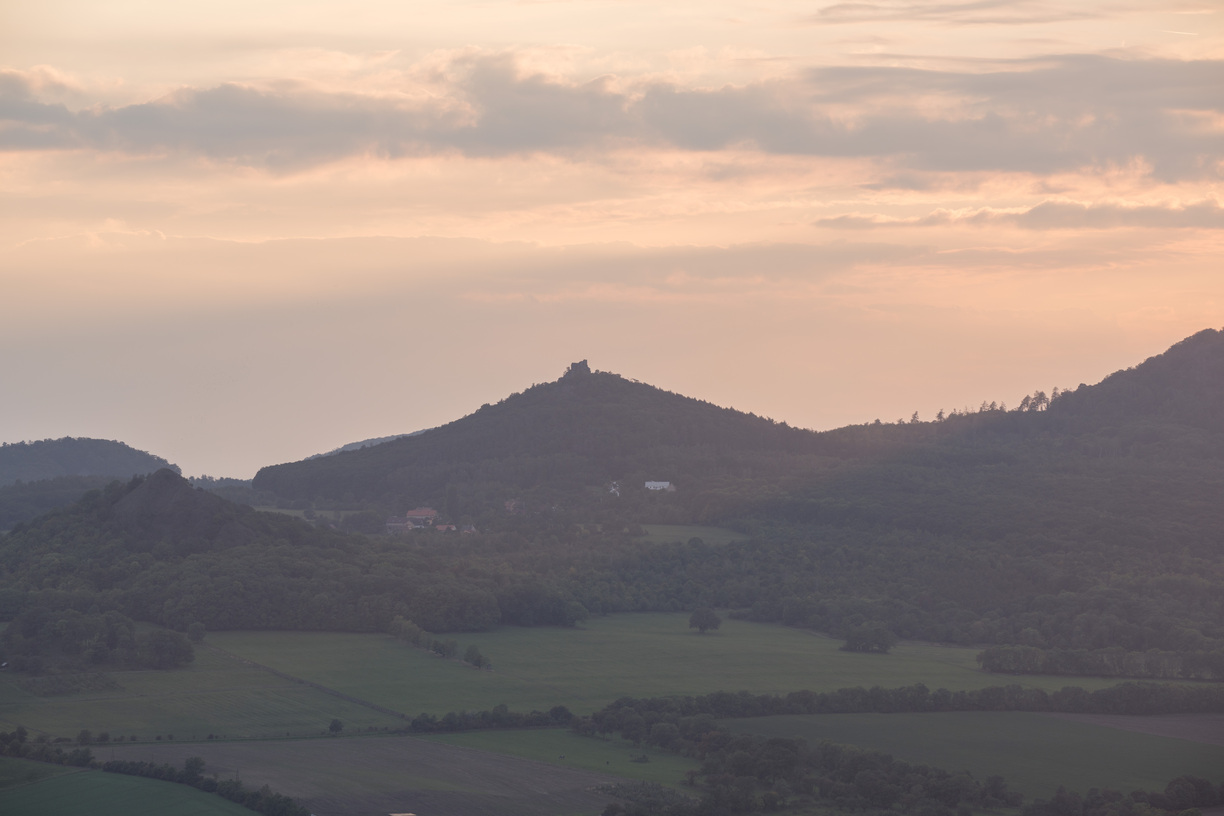
Images are here: JTR_150 mm_100-400mm F5-6.3 DG OS HSM - Contemporary 017_07794.jpg JTR_151 mm_E 50-400mm F4.5-6.3 A067_07778.jpg JTR_152 mm_FE 100-400mm F4.5-5.6 GM OSS_07746.jpg
Comments: basically same thing as at 100mm, but sharpness differences are stronger: Tamron is worse in center (more so than at 100mm) but better in sides and corners (others are worse than Tamron, more so than at 100mm).
Day 1 - Scene 4 - 200mm
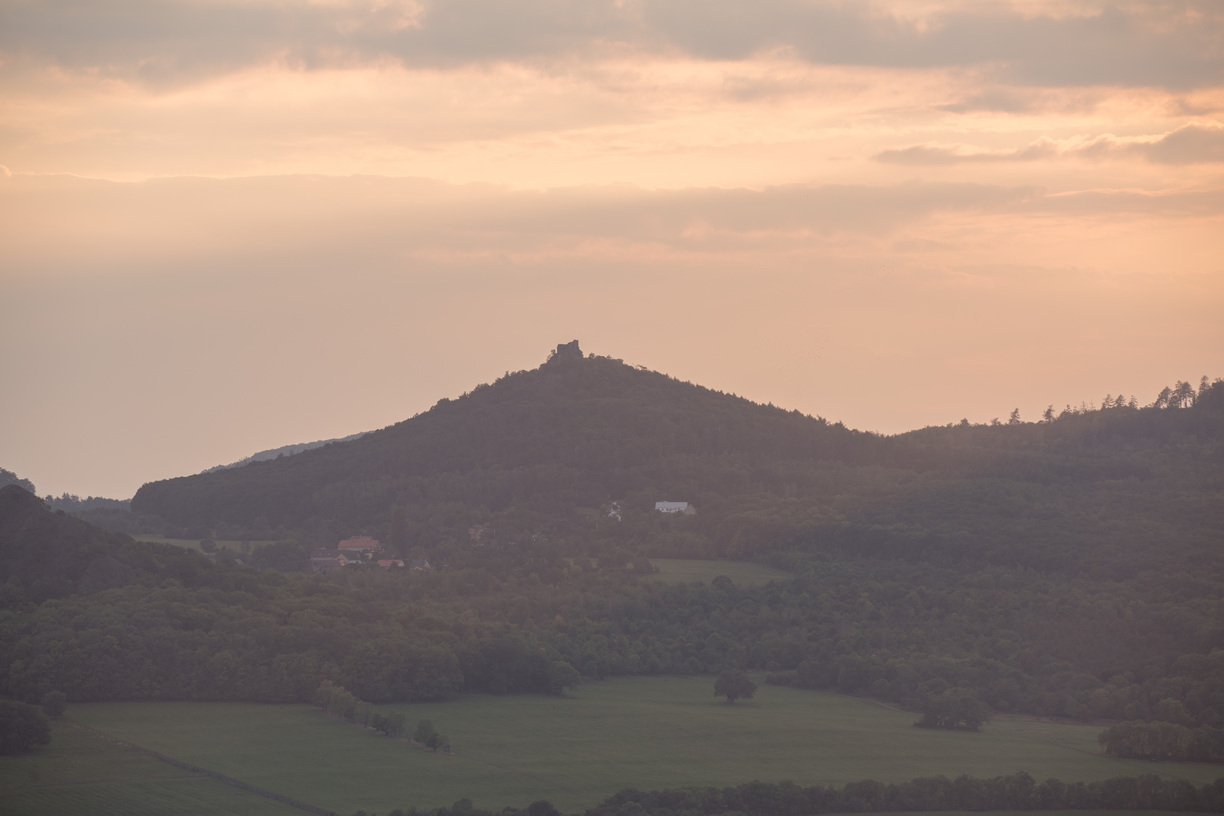
Images are here: JTR_196 mm_100-400mm F5-6.3 DG OS HSM - Contemporary 017_07798.jpg JTR_200 mm_E 50-400mm F4.5-6.3 A067_07781.jpg JTR_200 mm_FE 100-400mm F4.5-5.6 GM OSS_07747.jpg
Comments: again, similar to what was at 100mm and 150mm. Tamron slightly loses to both 100-400 in the center. Sigma improved left side where it is tiny bit better than Tamron, but it is quite worse than Tamron at the right side.
Day 1 - Scene 4 - 300mm
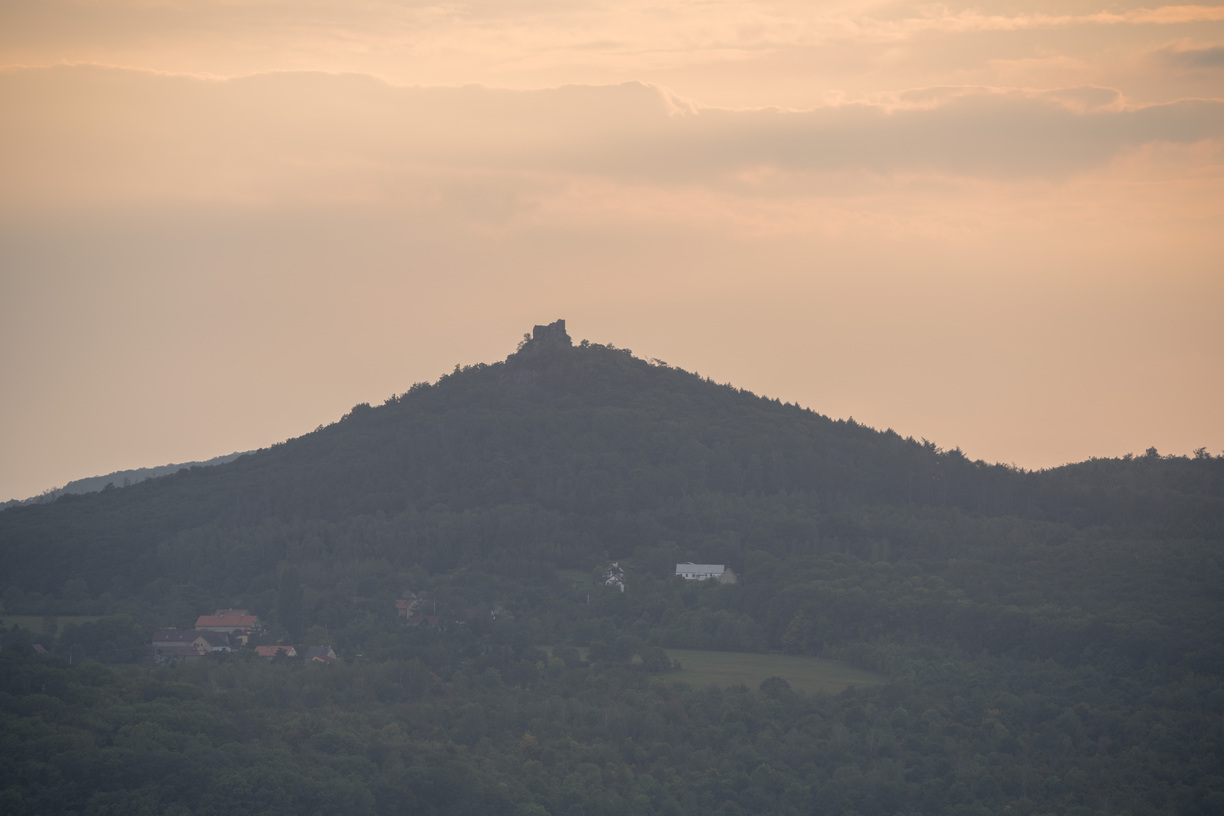
Images are here: JTR_296 mm_E 50-400mm F4.5-6.3 A067_07783.jpg JTR_300 mm_FE 100-400mm F4.5-5.6 GM OSS_07750.jpg JTR_302 mm_100-400mm F5-6.3 DG OS HSM - Contemporary 017_07802.jpg
Comments:
50-400 vs Sony 100-400 GM: the Sony GM is a bit better in center, but it is quite worse on the left side. It is also worse on the right side, though not as bad as on the left side.
50-400 vs Sigma 100-400 Canon mount: the Sigma is a bit better in horizon center, but it is quite worse on the right side. Going from central area of the horizon to the left, both lenses equalize in the middle of that distance, but further left the Sigma is winning again.
Day 1 - Scene 4 - 400mm
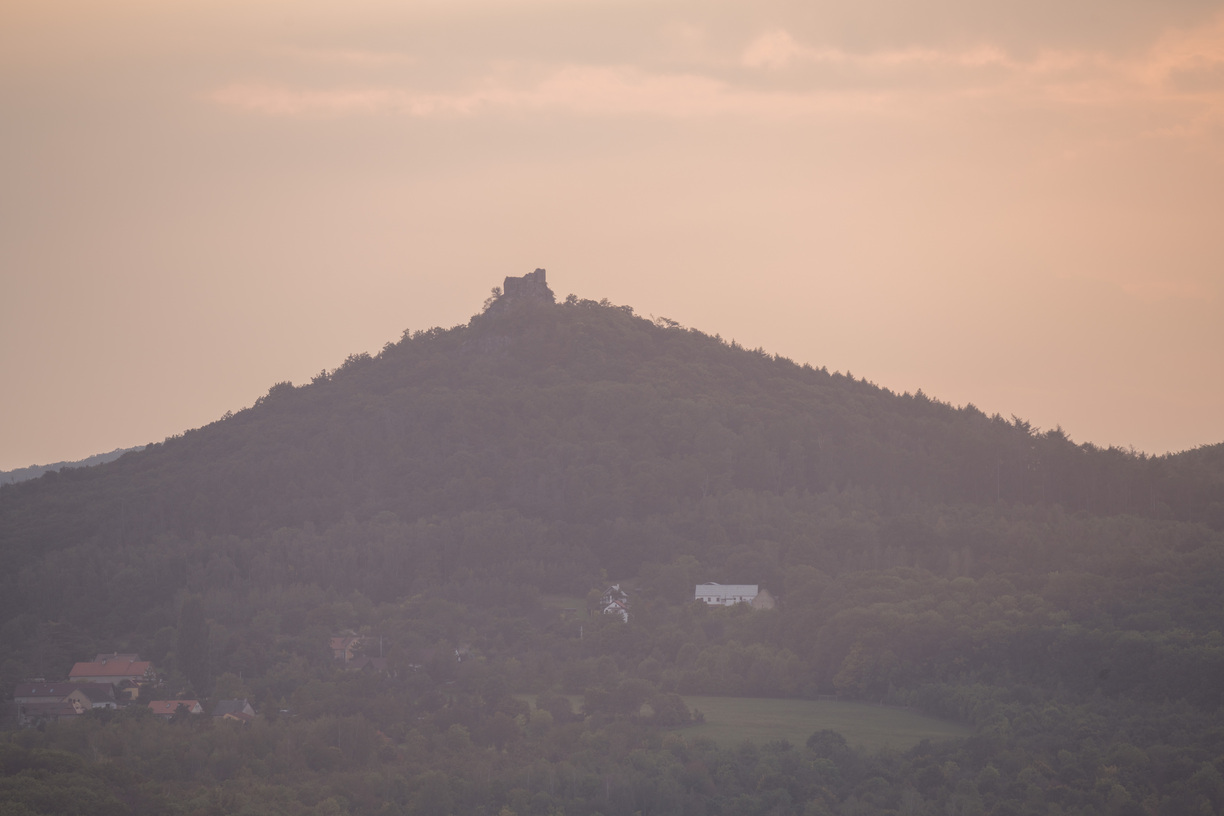
Images are here: JTR_400 mm_100-400mm F5-6.3 DG OS HSM - Contemporary 017_07806.jpg JTR_400 mm_E 50-400mm F4.5-6.3 A067_07787.jpg JTR_400 mm_FE 100-400mm F4.5-5.6 GM OSS_07752.jpg
Comments:
50-400 vs Sony 100-400 GM: Tamron as good as Sony GM, even slightly better on the right side.
50-400 vs Sigma 100-400 Canon mount: both are good in center. Sigma is slightly better on the left side, Tamron is slightly better on the right side. But the Sigma is quite worse at most of the bottom.
Day 1 - Scene 5
Skipped. Not worth processing.
Day 1 - Scene 6 - 400mm
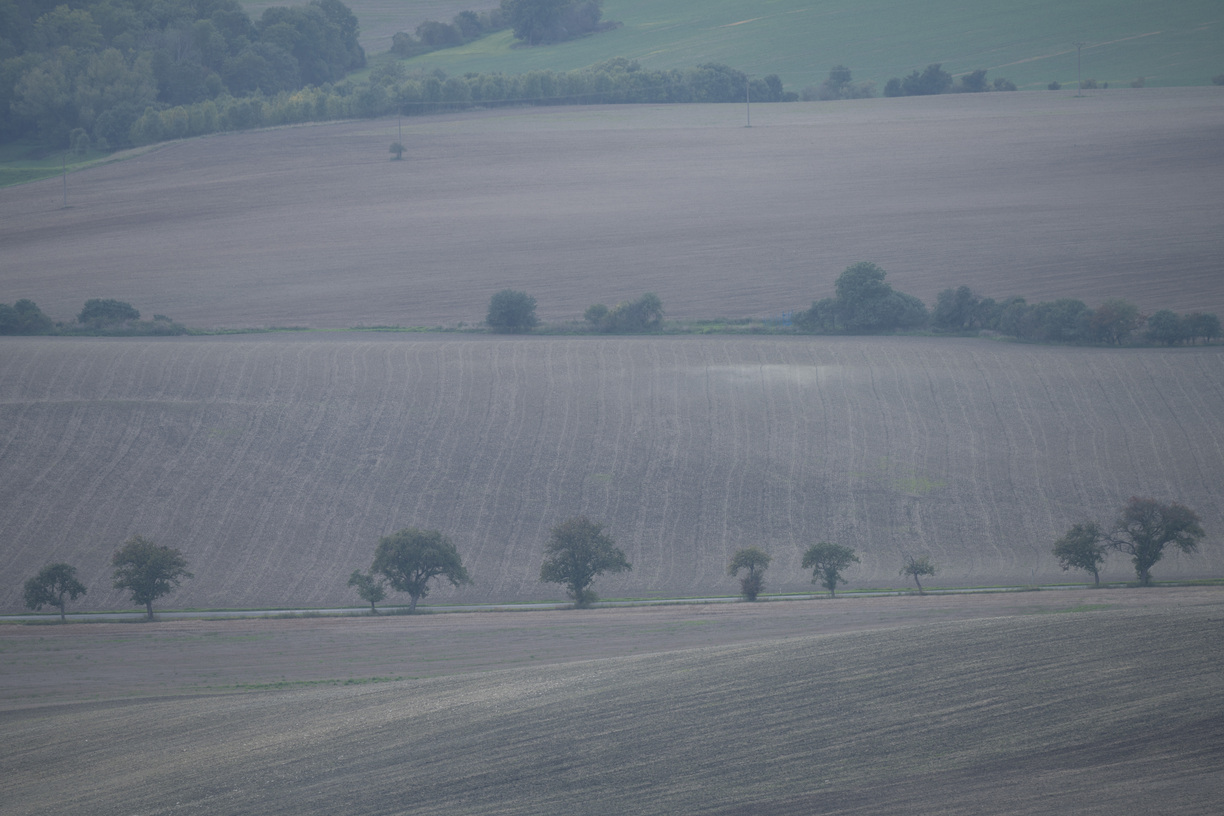
Images are here: JTR_400 mm_100-400mm F5-6.3 DG OS HSM - Contemporary 017_07884.jpg JTR_400 mm_E 50-400mm F4.5-6.3 A067_07880.jpg JTR_400 mm_FE 100-400mm F4.5-5.6 GM OSS_07864.jpg
Comments:
50-400 vs Sony 100-400 GM: both are same in central area. Tamron is a tiny bit better on the right side and it is better at the top part (maybe GM is out of focus there).
50-400 vs Sigma 100-400 Canon mount: Tamron is slightly better in the center and quite better everywhere else.
Day 1 - Scene 7
In this scene the focus area was “Zone” with the center zone selected. As light levels and contrast were low, I did not want to use L-flexible spot because it is less reliable in these conditions, especially with Sigma.
There are some color differences. I have equalized WB settings but pictures for each lens are about 4 minutes apart. Light could have changed.
Day 1 - Scene 7 - 50mm
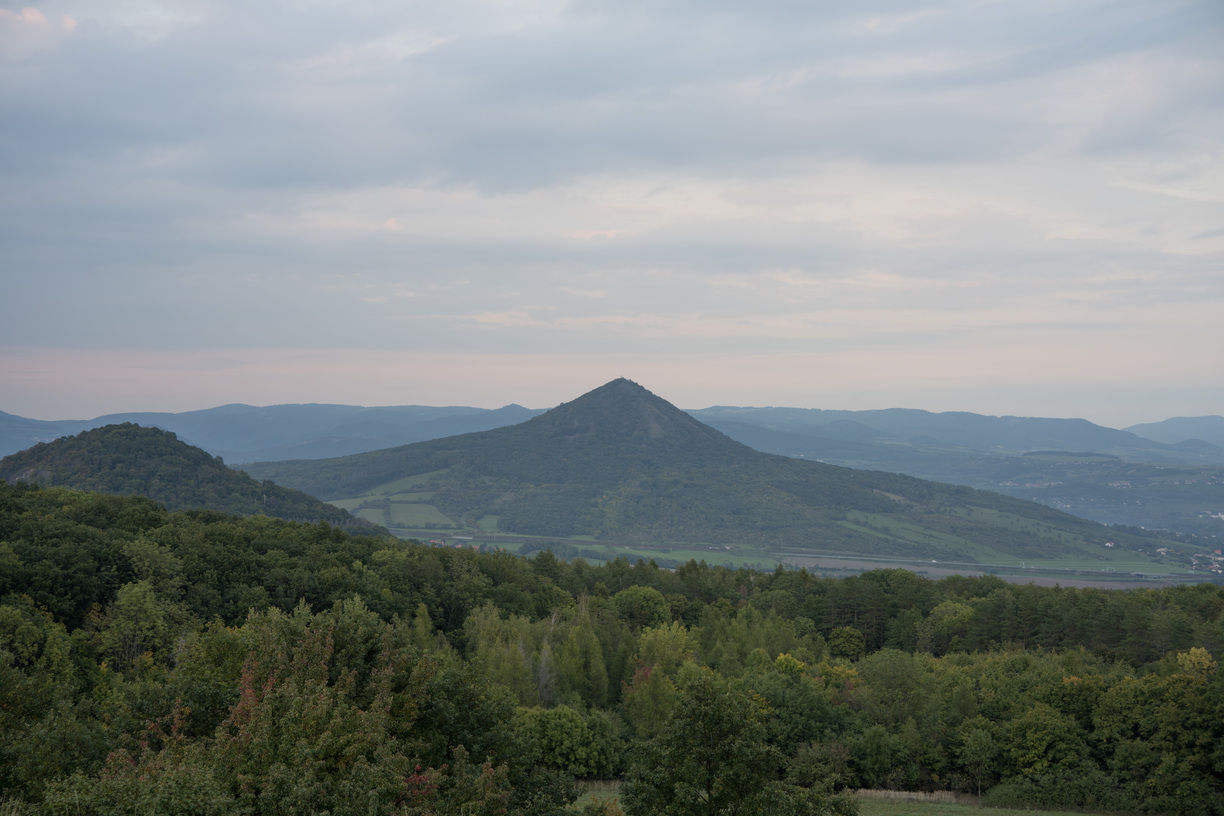
Images are here: JTR_50 mm_E 50-400mm F4.5-6.3 A067_07908.jpg JTR_50 mm_FE 24-105mm F4 G OSS_07943.jpg
Comments: Tamron 50-400 is a tiny bit better in center over 24-105. Both are about same on the left side. Tamron 50-400 is worse on the right side, including bottom corner.
Day 1 - Scene 7 - 70mm
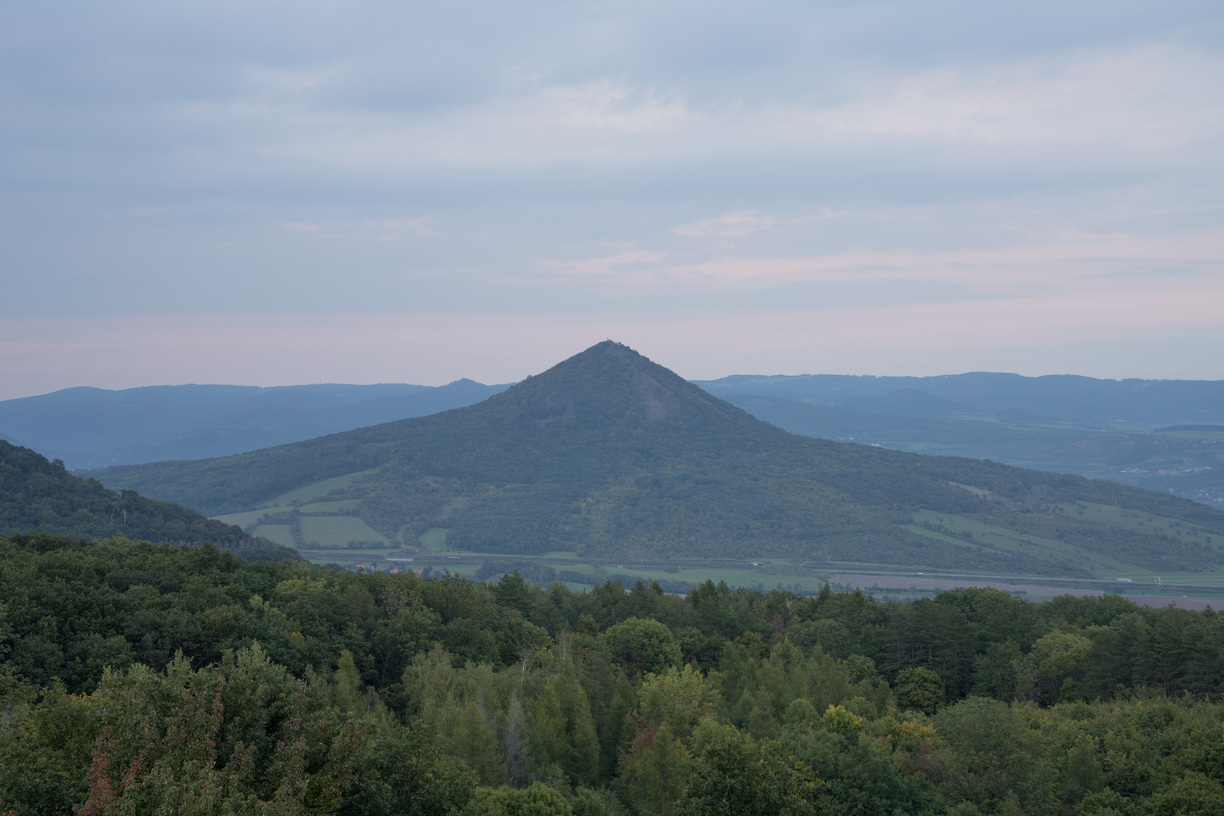
Images are here: JTR_67 mm_FE 24-105mm F4 G OSS_07945.jpg JTR_69 mm_E 50-400mm F4.5-6.3 A067_07913.jpg
Comments: both lenses are the same almost everywhere except the right side where Tamron is better.
Day 1 - Scene 7 - 100mm
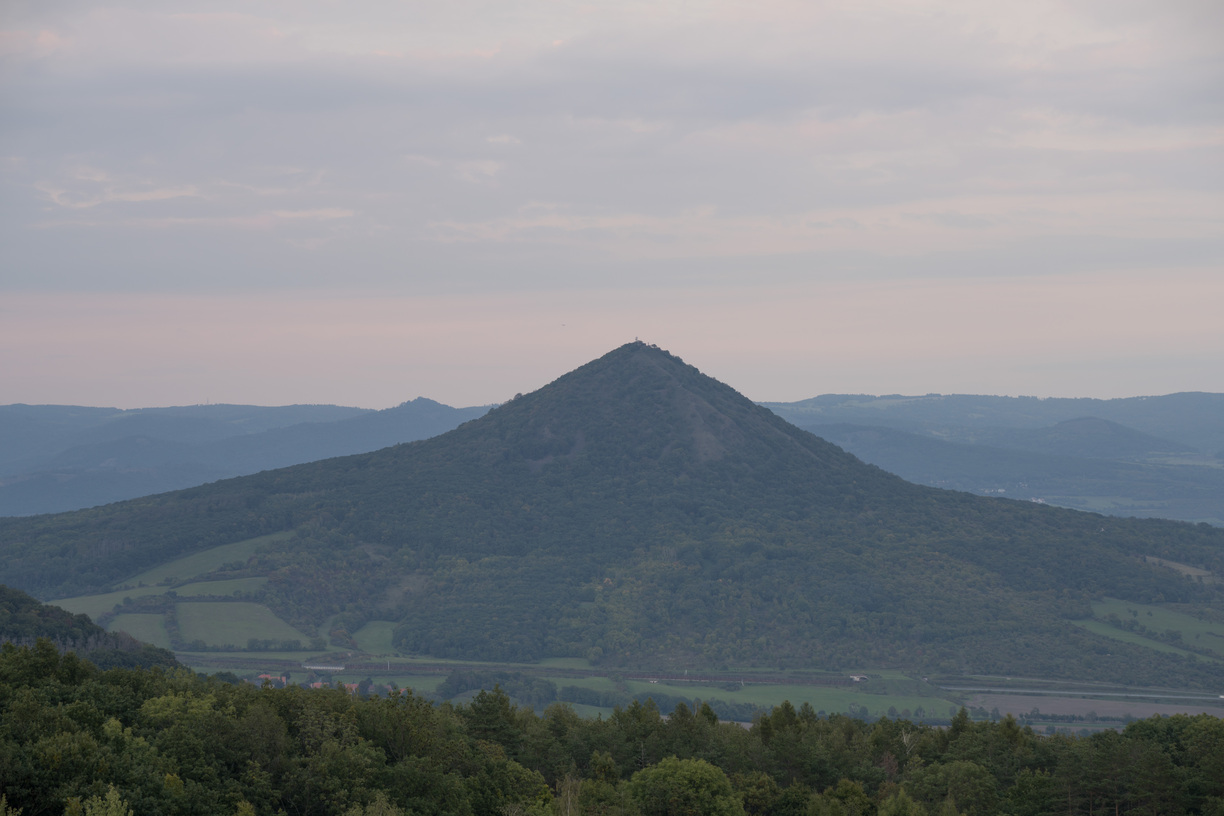
Images are here: JTR_100 mm_100-400mm F5-6.3 DG OS HSM - Contemporary 017_07895.jpg JTR_100 mm_E 50-400mm F4.5-6.3 A067_07914.jpg JTR_100 mm_FE 100-400mm F4.5-5.6 GM OSS_07928.jpg JTR_103 mm_FE 24-105mm F4 G OSS_07952.jpg
Comments:
50-400 vs Sigma 100-400 Canon mount: Sigma is a tiny bit better in center, but Sigma is worse than Tamron everywhere.
50-400 vs Sony 100-400 GM: Sony GM is a tiny bit better in center, but GM is a bit worse in sides and corners.
50-400 vs Sony 24-105: Sony 24-105 is a tiny bit sharper in center, both are about same everywhere else.
Day 1 - Scene 7 - 200mm
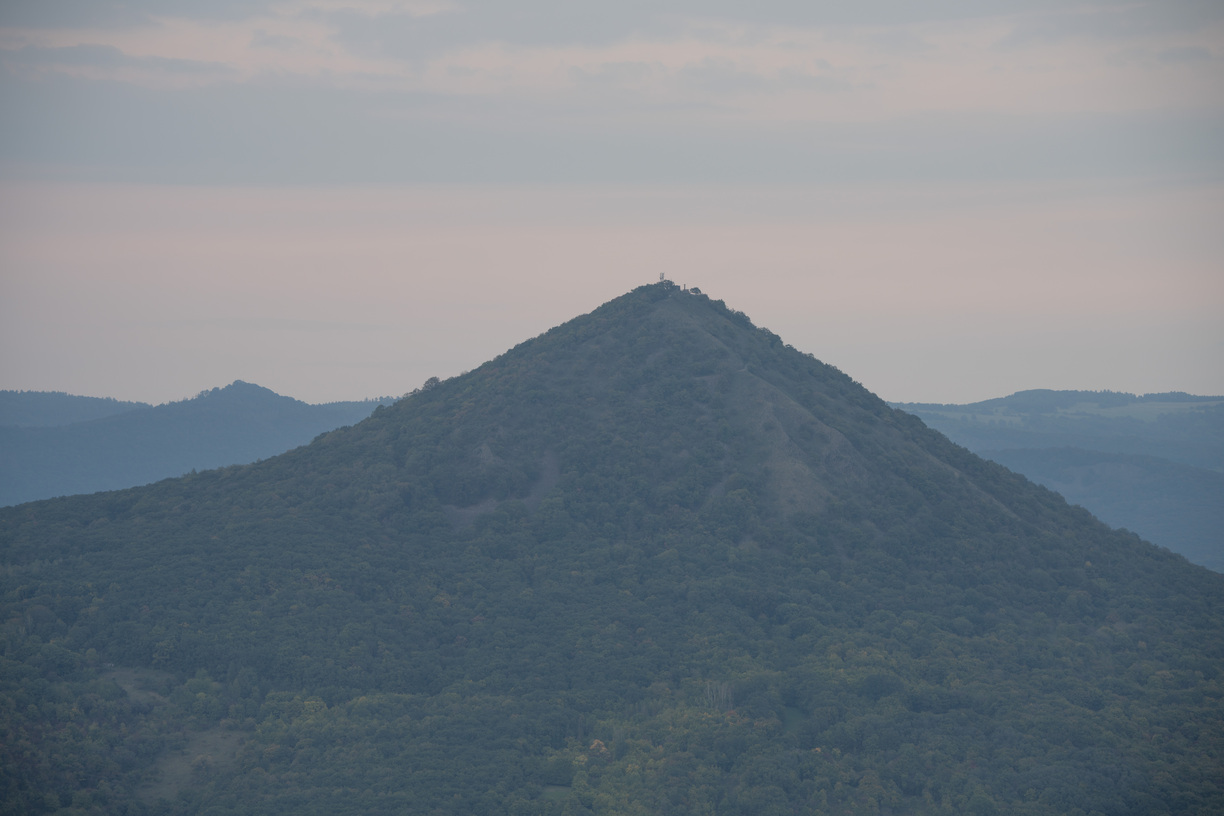
Images are here: JTR_200 mm_E 50-400mm F4.5-6.3 A067_07918.jpg JTR_200 mm_FE 100-400mm F4.5-5.6 GM OSS_07931.jpg JTR_202 mm_100-400mm F5-6.3 DG OS HSM - Contemporary 017_07899.jpg
Comments:
50-400 vs Sigma 100-400 Canon mount: Sigma is a bit better in center and on the left side, but Sigma is worse than Tamron on the right side and bottom.
50-400 vs Sony 100-400 GM: Sony GM is slightly better almost everywhere except right side where Tamron is slightly better.
Day 1 - Scene 7 - 300mm
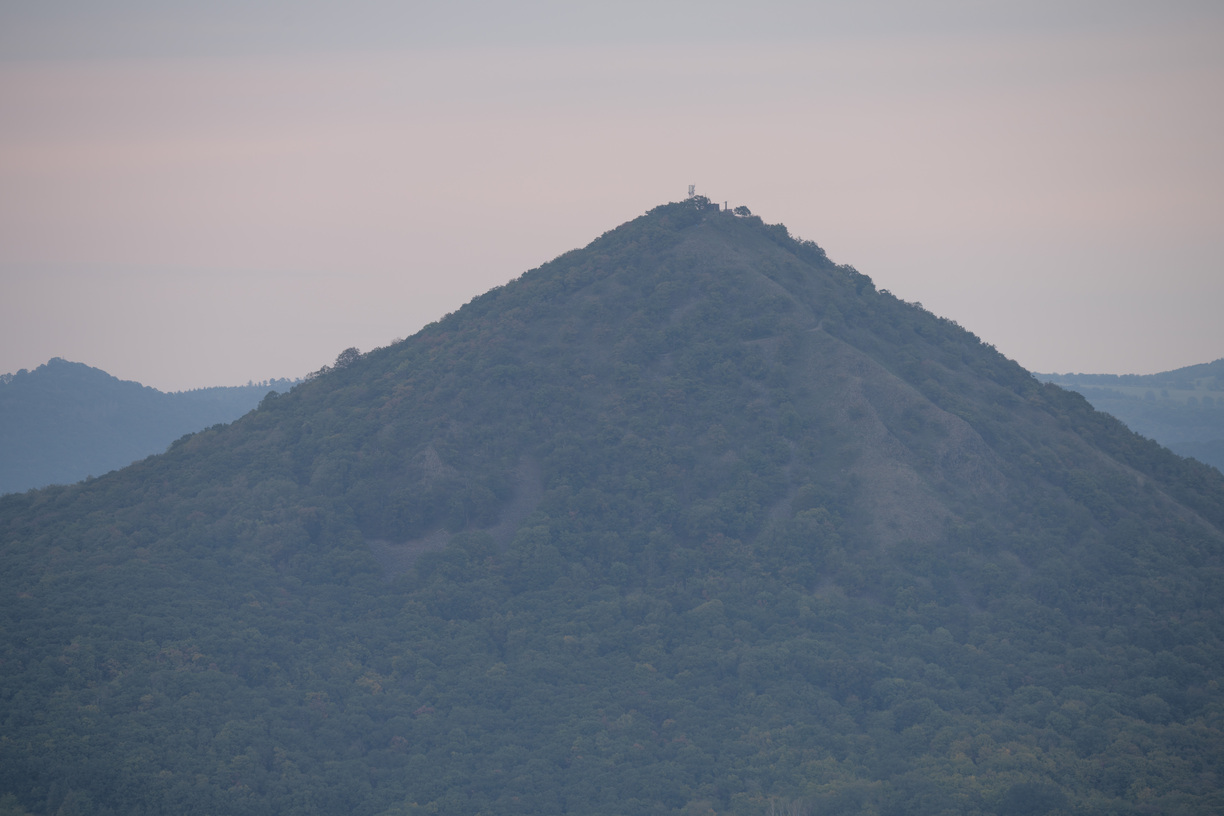
Images are here: JTR_291 mm_100-400mm F5-6.3 DG OS HSM - Contemporary 017_07900.jpg JTR_300 mm_E 50-400mm F4.5-6.3 A067_07921.jpg JTR_300 mm_FE 100-400mm F4.5-5.6 GM OSS_07935.jpg
Comments:
Tamron is better than both Sigma and Sony GM. But both losers look a bit out of focus so maybe with different focus they would fare better.
50-400 vs Sigma 100-400 Canon mount: Tamron is better everywhere, though at left side Sigma is close.
50-400 vs Sony 100-400 GM: Tamron is better everywhere, more so out of center.
Day 1 - Scene 7 - 400mm
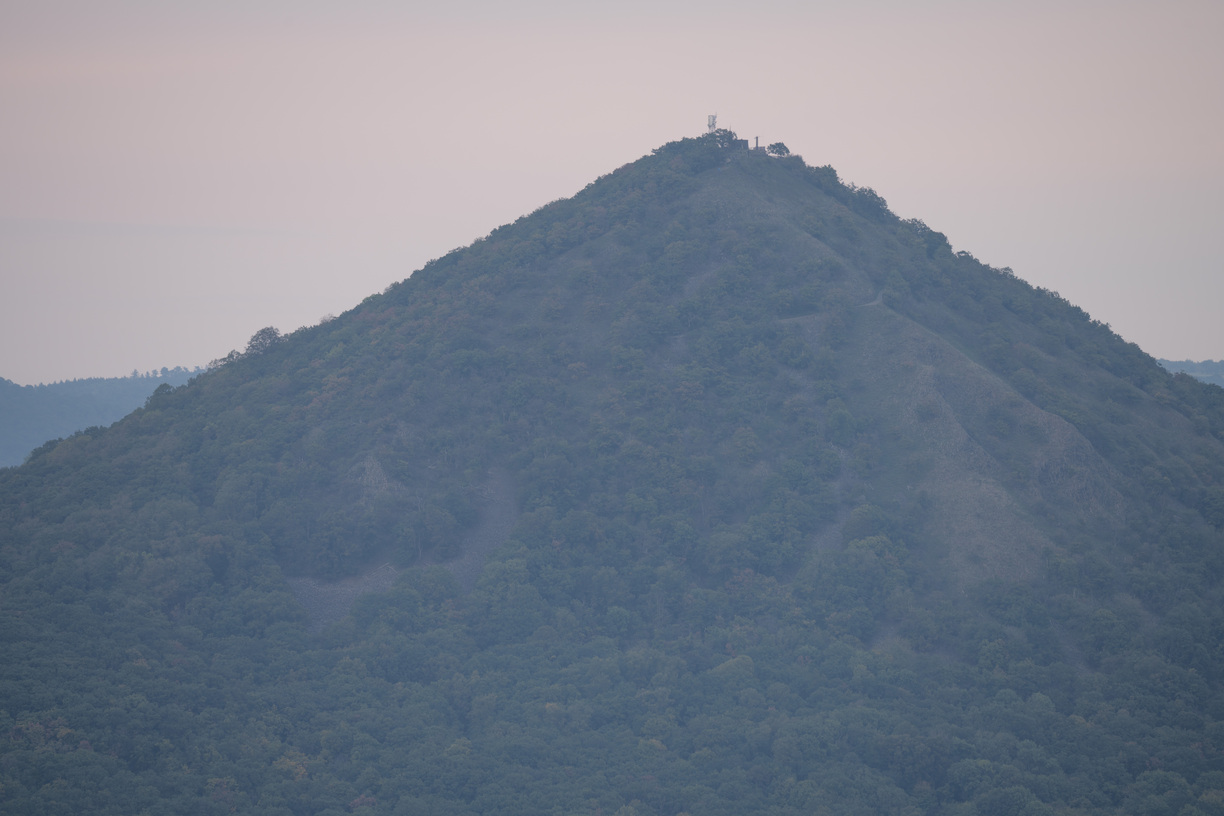
Images are here: JTR_400 mm_100-400mm F5-6.3 DG OS HSM - Contemporary 017_07906.jpg JTR_400 mm_E 50-400mm F4.5-6.3 A067_07924.jpg JTR_400 mm_FE 100-400mm F4.5-5.6 GM OSS_07941.jpg
Comments:
50-400 vs Sigma 100-400 Canon mount: Tamron slightly better near top of the hill, but worse everywhere on the left side, except for bottom where Tamron wins. On the right side both are about the same.
50-400 vs Sony 100-400 GM: Tamron is slightly better near top of the hill. GM is about the same as Tamron in most of the picture except for close to the left side where it is a bit better.
Scenes Day 2
Due to darker exposures pictures are processed with LR shadows +100, highlights -30, wb 5600K, tint +13 unless stated otherwise.
Day 2 - Scene 1 - 50mm
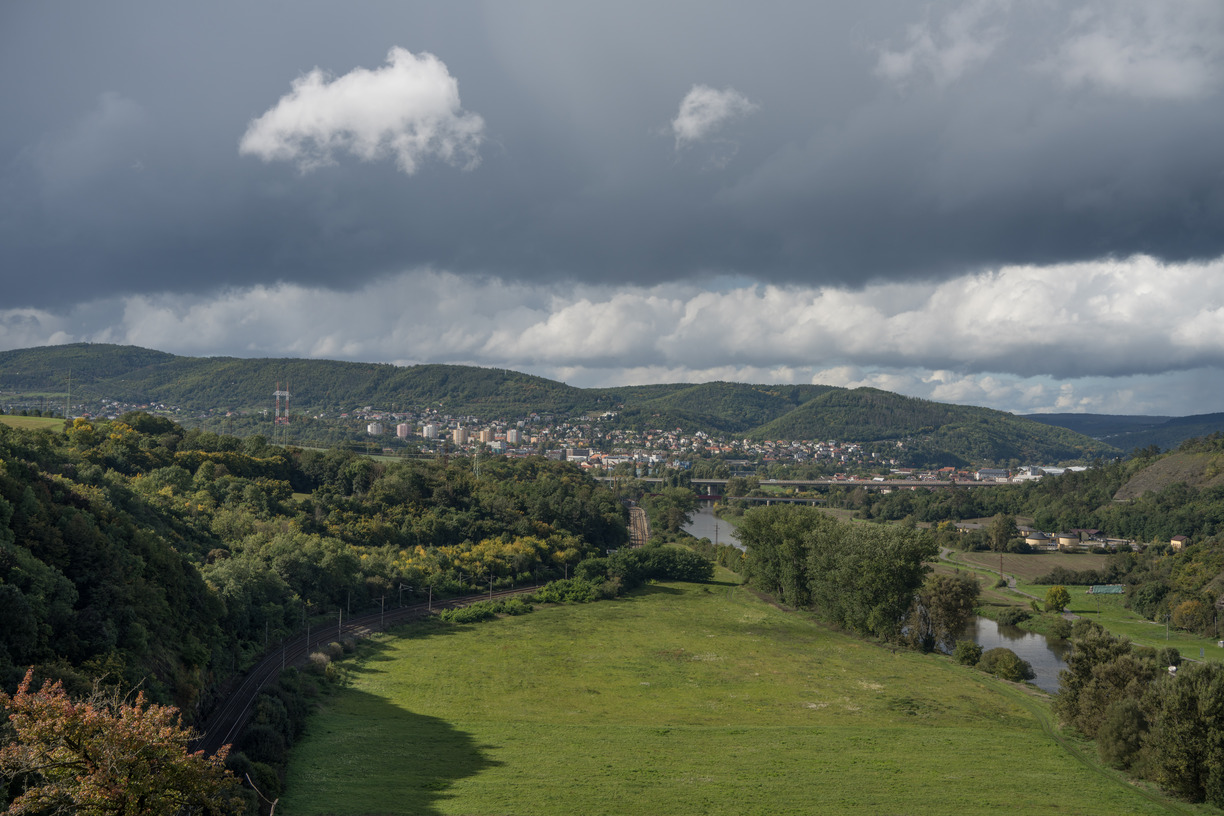
Images are here:
JTR_50 mm_E 50-400mm F4.5-6.3 A067_08511.jpg JTR_55 mm_FE 55mm F1.8 ZA_08500.jpg
Comments:
55/1.8ZA vs 50-400 (at 50mm): both perform excellent in the central area. The Tamron 50-400 is less sharp in both sides, about starting about 1/10 of image width from the side. Tree at the bottom left is out of focus on the Tamron, but it is in focus with the prime. A boat visible near bottom right corner is nicely sharp with prime, but blurred a bit with the zoom. It also shows some chromatic aberration. Tamron at 50mm is a bit wider than prime at 55mm which good (sometimes a zoom range of lenses uses quite a big rounding making them appear to have bigger range than they really have, this is not the case here).
Day 2 - Scene 1 - 85mm
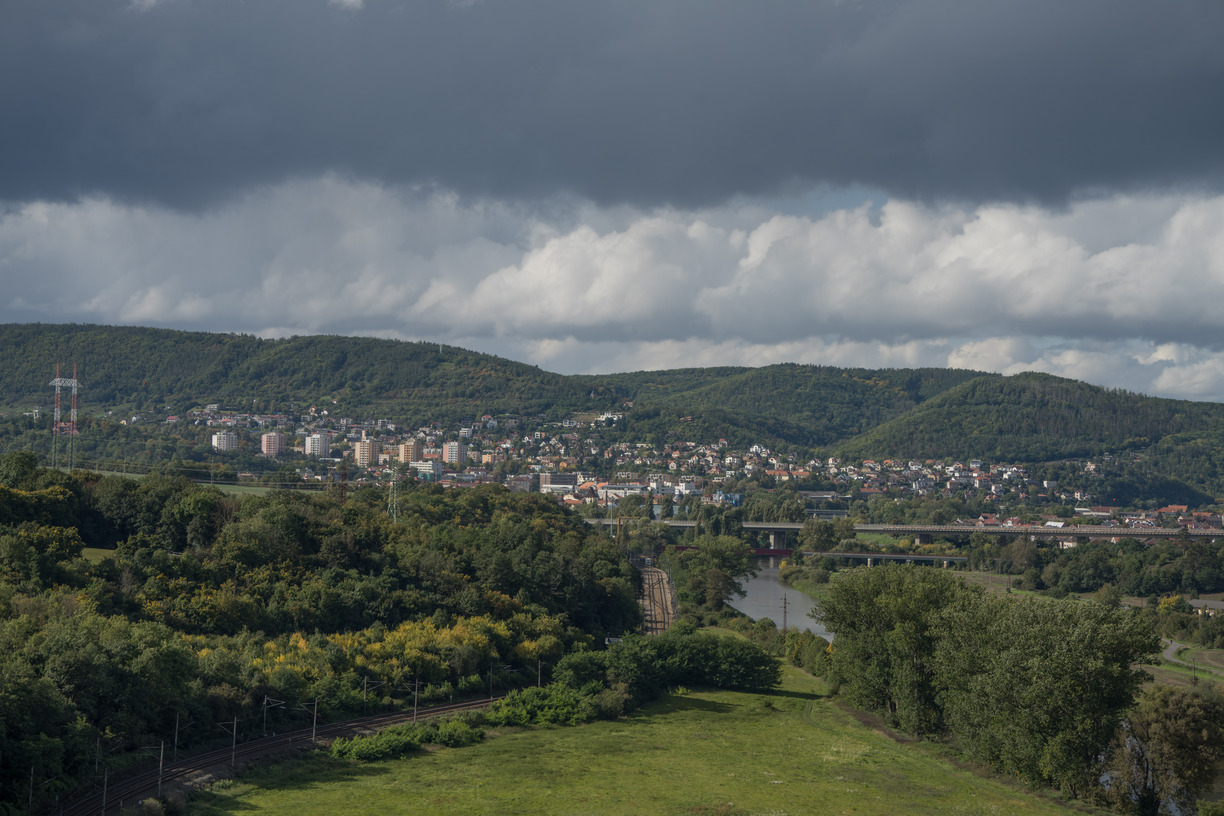
Images are here:
JTR_82 mm_E 50-400mm F4.5-6.3 A067_08518.jpg JTR_85 mm_FE 85mm F1.8_08510.jpg
Comments:
85/1.8G vs 50-400: both perform excellent in central area. The Tamron 50-400 is a bit less sharp on both sides, however the difference is smaller than it was with 55 above. This is great result for 8x zoom. I am sure I will keep 85 prime at home while going out with the Tamron.
Day 2 - Scene 1 - 100mm
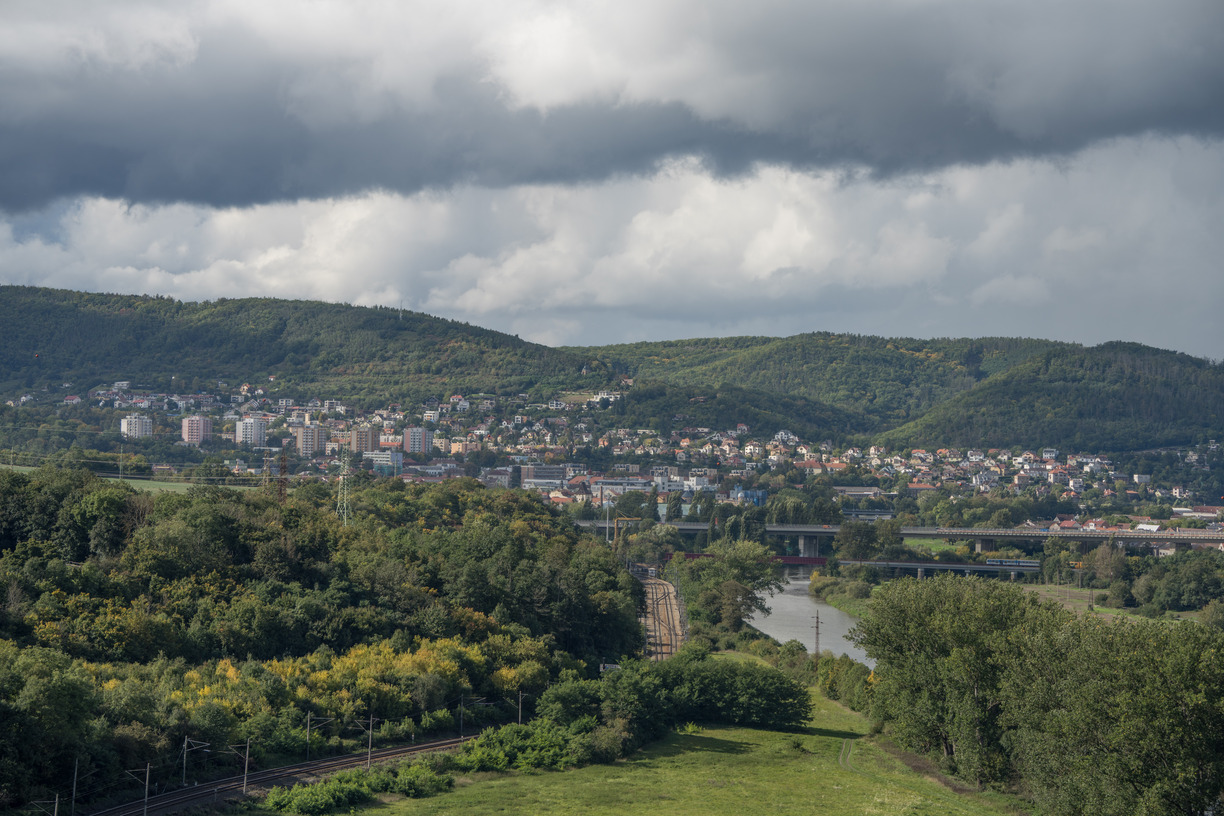
Images are here:
JTR_100 mm_E 50-400mm F4.5-6.3 A067_08403.jpg JTR_100 mm_FE 100-400mm F4.5-5.6 GM OSS_08441.jpg
Comments:
50-400 vs Sony 100-400 GM: both are quite sharp in central area, though Tamron is slightly behind. Overall Sony is better on the central and right side of the image and Tamron is better on the left side.
Day 2 - Scene 1 - 200mm
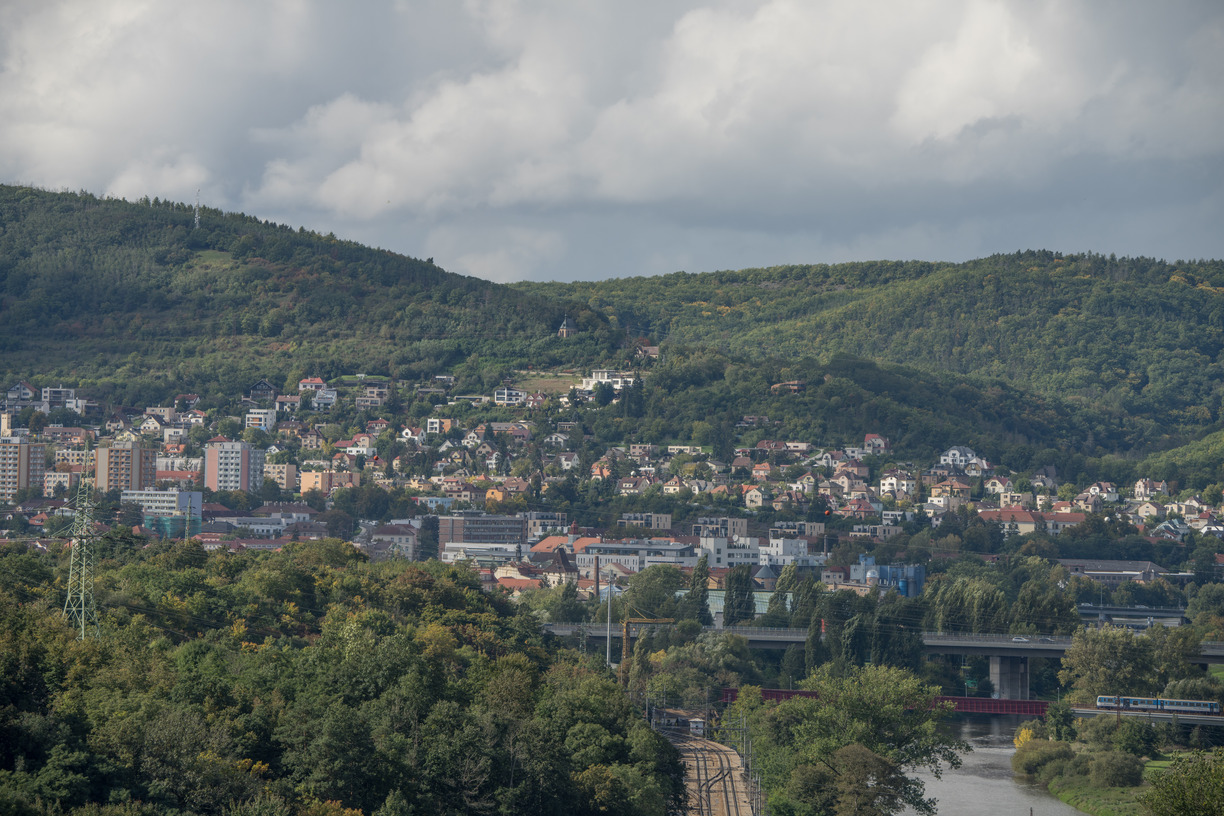
Images are here:
JTR_200 mm_E 50-400mm F4.5-6.3 A067_08408.jpg JTR_200 mm_FE 100-400mm F4.5-5.6 GM OSS_08467.jpg
Comments:
50-400 vs Sony 100-400 GM: Sony is bit better in image center. Tamron is better in on sides.
Day 2 - Scene 1 - 400mm
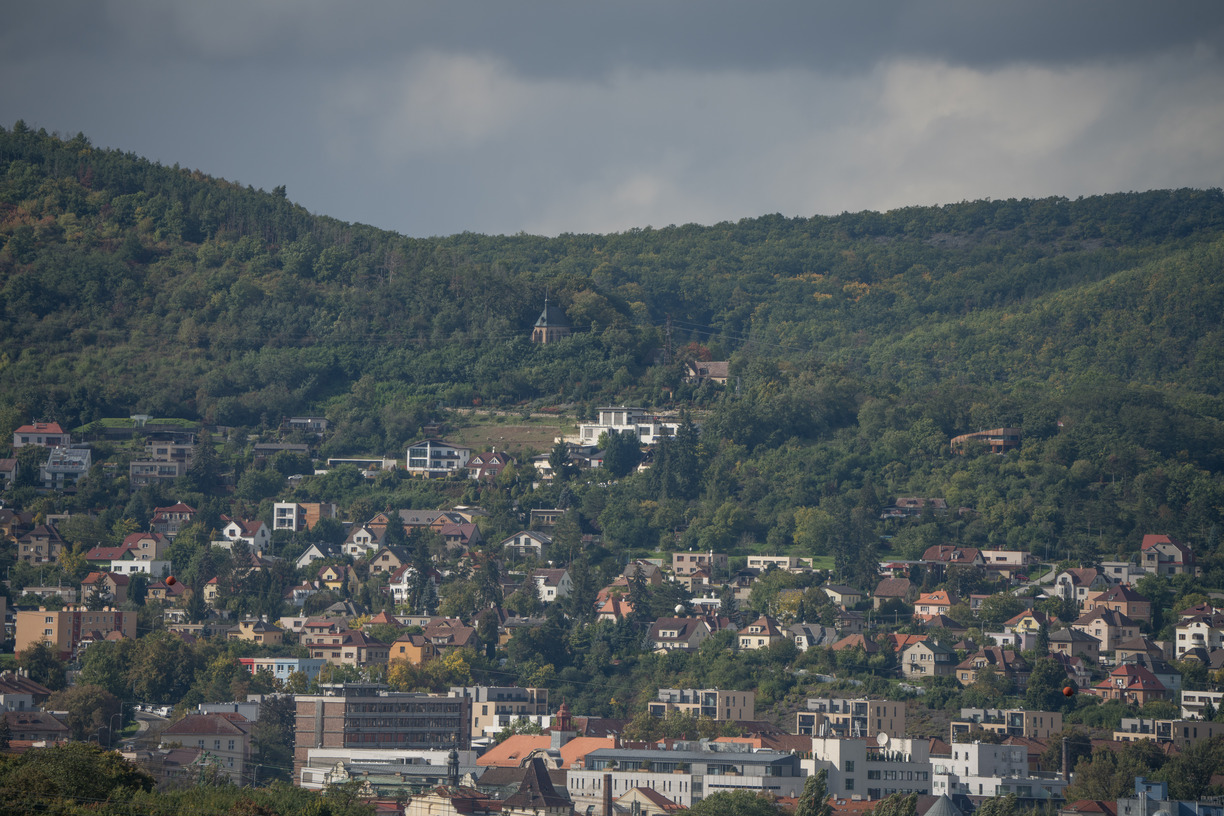
Images are here:
JTR_400 mm_E 50-400mm F4.5-6.3 A067_08553.jpg JTR_400 mm_E 50-400mm F4.5-6.3 A067_08565.jpg JTR_400 mm_FE 100-400mm F4.5-5.6 GM OSS_08605.jpg
Comments:
Caveat: the distortion by uneven air temperature definitely has some impact here.
50-400 vs Sony 100-400 GM: There are two images for the Tamron. I was playing with Bluetooth remote to do tiny focus shifts to see if that could show the weaker center performance of the Tamron is caused by field curvature. That proved to be hard to do as remote was often shifting focus either too much or not at all while also providing only limited feedback because touching camera to review would shake image too much. But here one picture pair (number 8553 and 8565) shows that Tamron can have sharp center with a bit weaker sides (8565) or it can have sharp sides and weaker center (8553). Comparing the Tamron image with better center sharpness: it is as good as Sony GM image there, but it is worse in corners. Comparing the Tamron image with better side sharpness: it is better than Sony GM in most of the right side, it is about equal or a bit worse at left side. There are power lines with white and red balls on them. The number 8853 has these balls more in focus implying that it was focused closer to camera making the central area not as sharp as it is a bit out of focus while sides and corners are in focus. So the shape of field curvature is that focused area in center is closer than in corners.
Day 2 - Scene 2
Just a nice composition with 50-400:
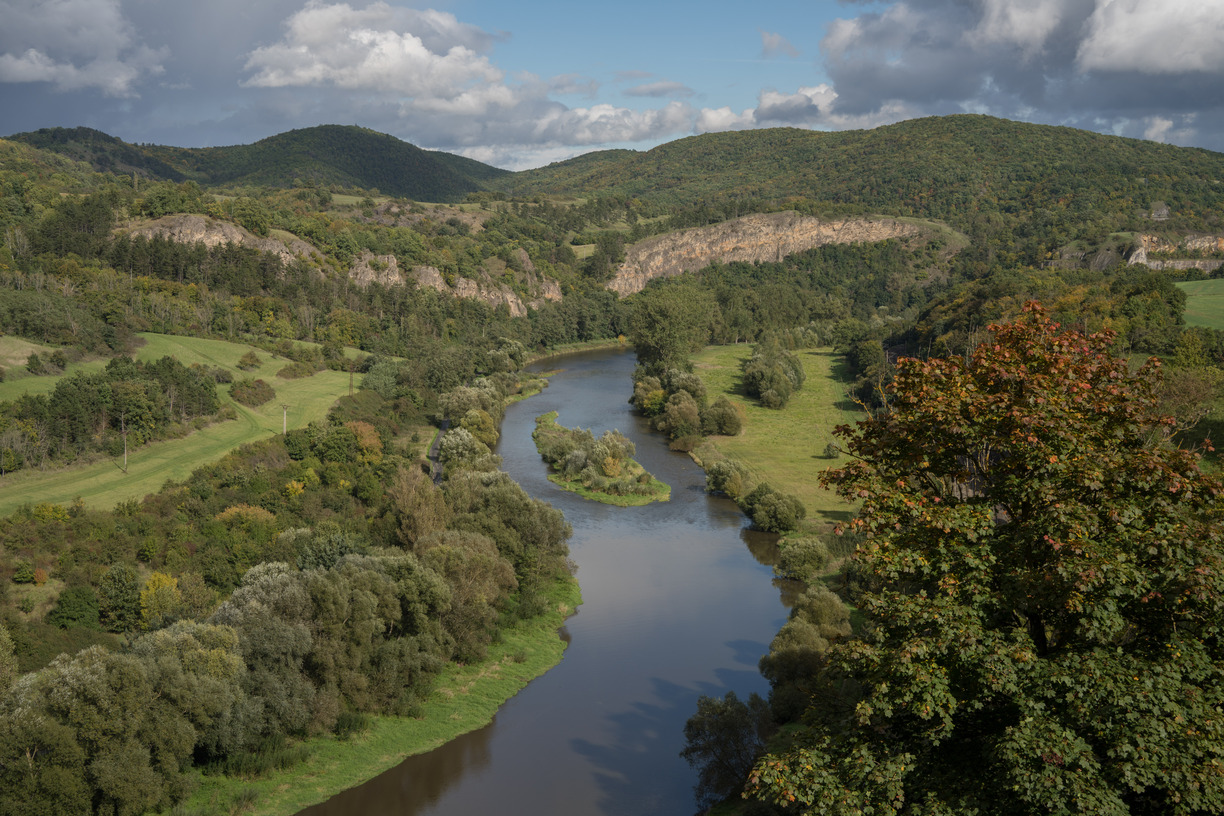
JTR_50 mm_E 50-400mm F4.5-6.3 A067_08669.jpg
I do have a picture with 55ZA for the same view, but light changed significantly.
Day 2 - Scene 3
Images are here:
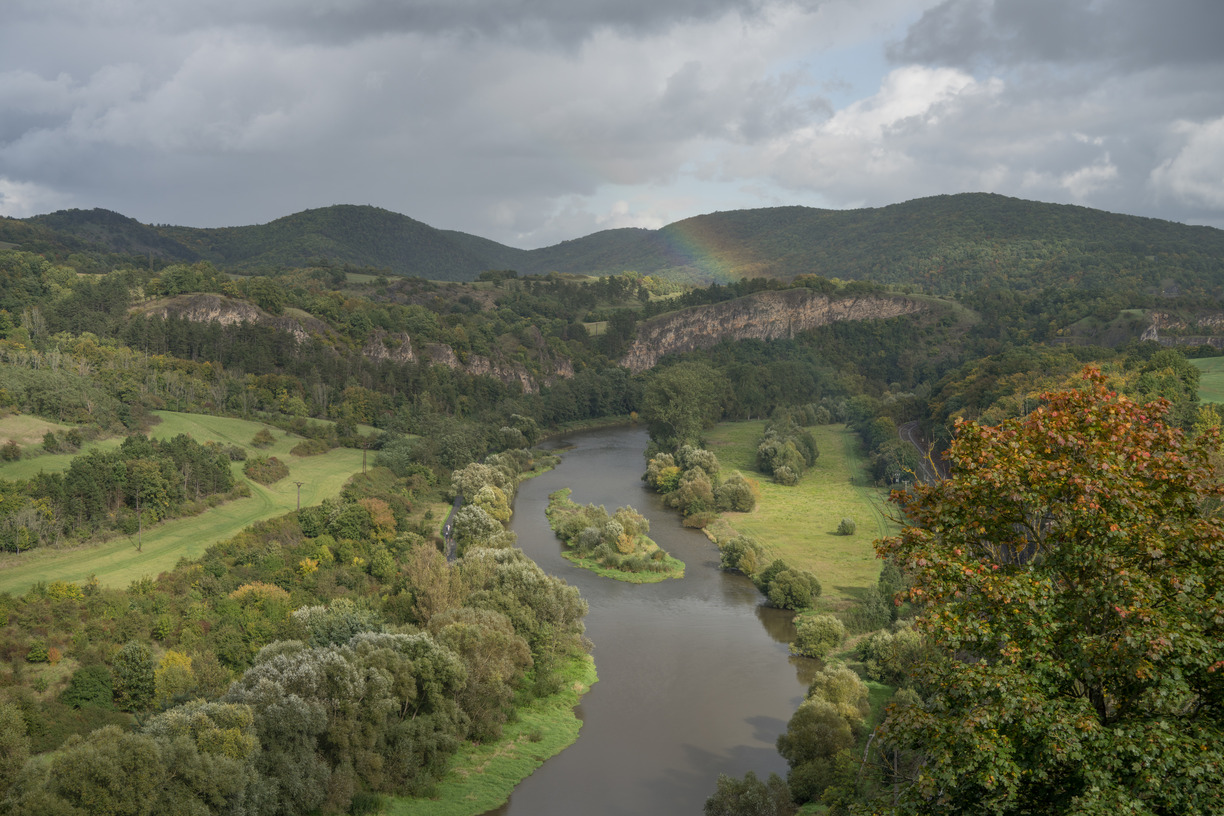
JTR_50 mm_E 50-400mm F4.5-6.3 A067_08746.jpg
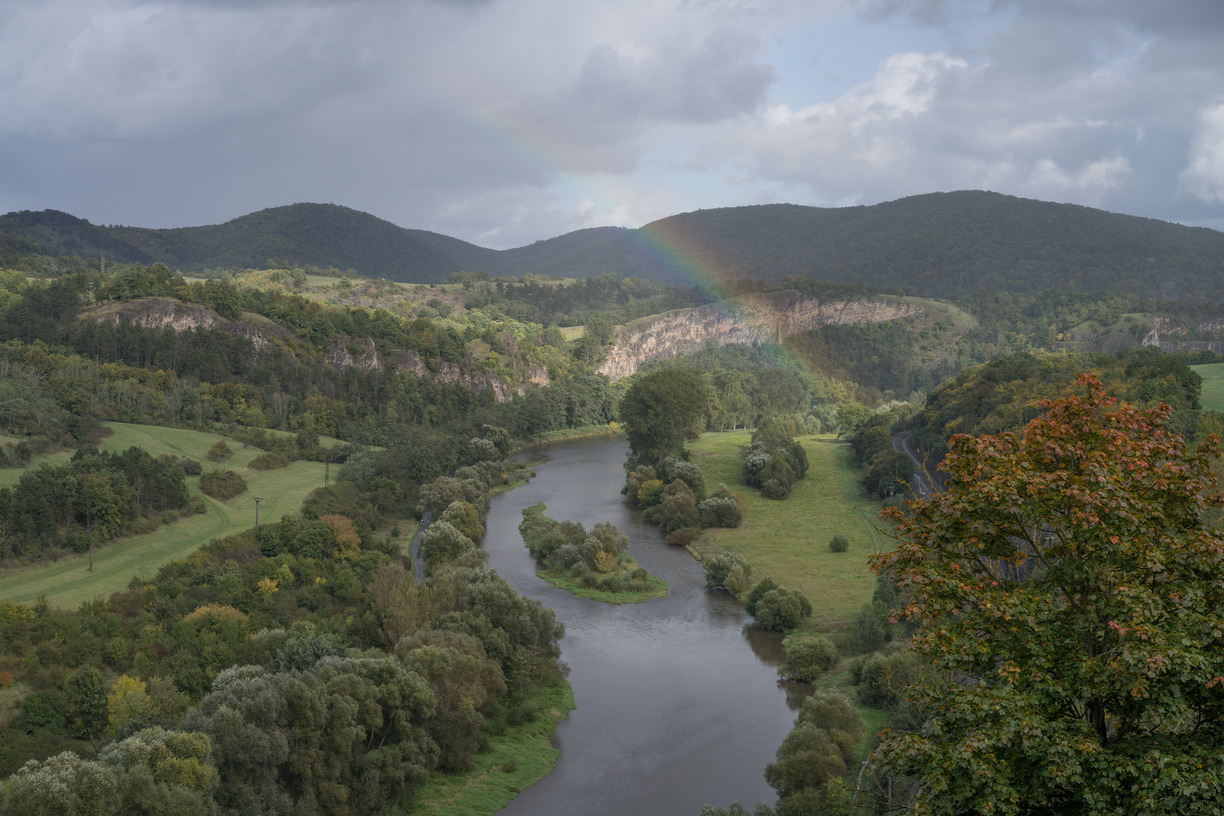
JTR_55 mm_FE 55mm F1.8 ZA_08745.jpg
Comments:
The first two images show same composition with 50mm of 50-400 and 55m of 55/1.8. I did a measurement over most of the width of image matching particular details from which I computed that if 55/1.8 has accurate 55mm, then Tamron has 52.6mm here. Tamron has more blur near sides.
As I had Tamron on the camera I was hearing that a train was coming while there was still some rainbow. I have moved tripod and adjusted zoom for better composition to capture the third image (below). That would not be possible if I was switching lenses (exif shows it was 12 seconds after the Tamron picture above). This is the flexibility that zoom provides. The image is sharper than if I would be cropping from that 55mm that I had on camera earlier. This image is processed more: I have increased vibrance while decreasing saturation in a bottom gradient and increasing contrast in top gradient.
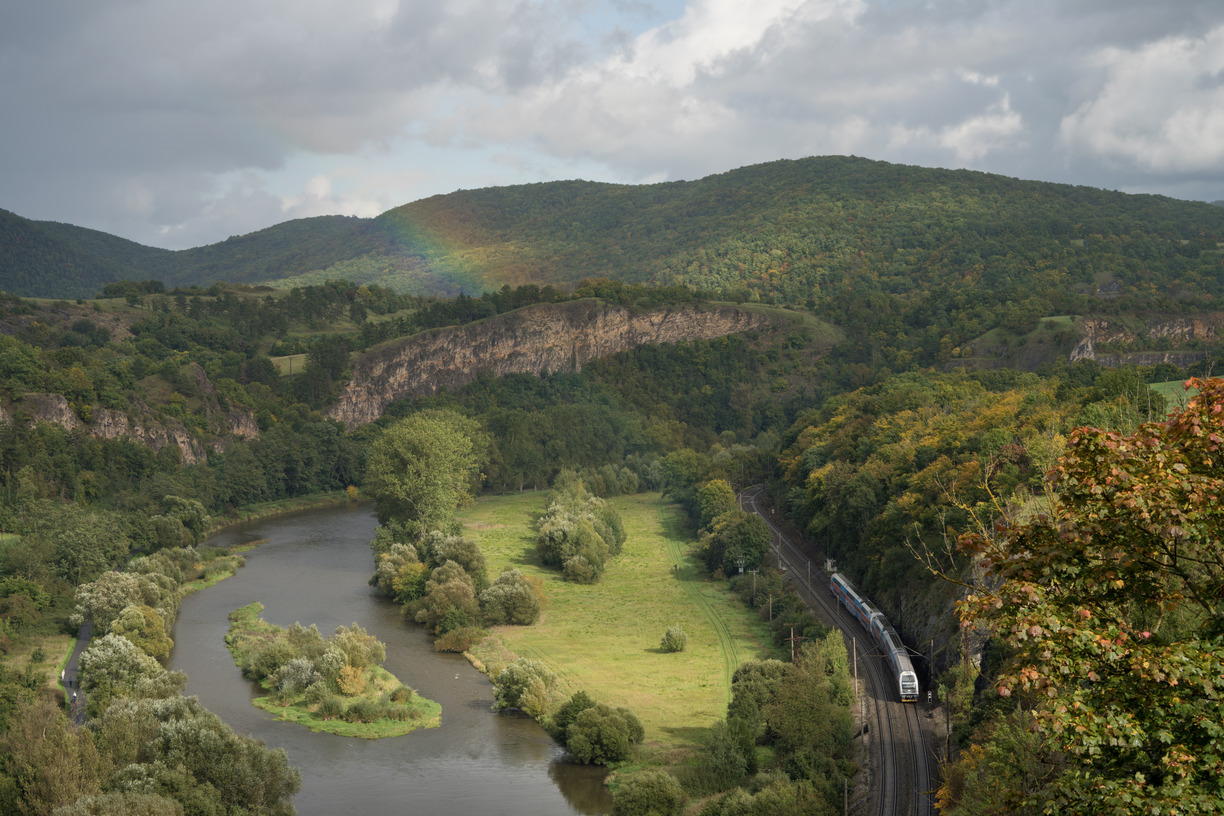
JTR_74 mm_E 50-400mm F4.5-6.3 A067_08762.jpg
Day 2 - Scene 4
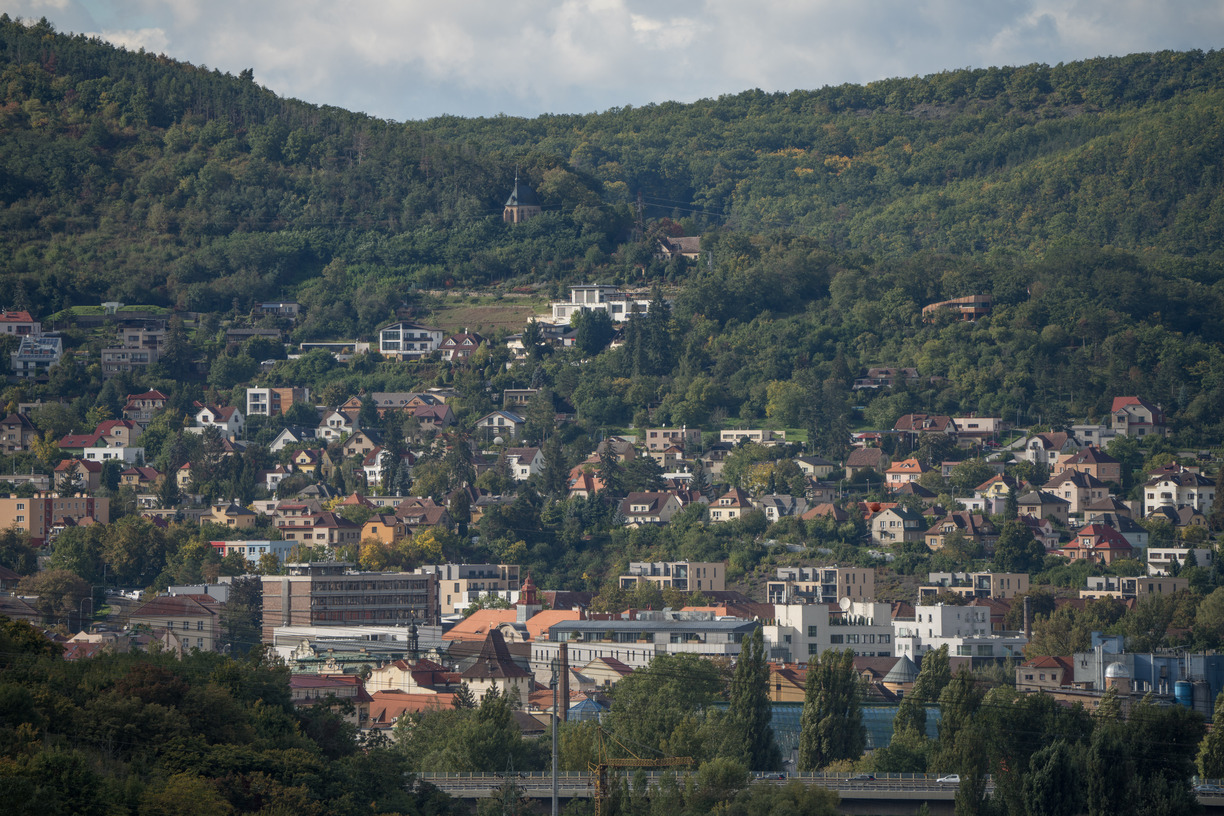
Images are here:
JTR_400 mm_E 50-400mm F4.5-6.3 A067_08787.jpg JTR_400 mm_E 50-400mm F4.5-6.3 A067_08789.jpg
Comment: Both images are from Tamron at 400mm. The first one at f/8 (number 8787), the second one at f/6.3 (number 8789). There is a small difference in sharpness in favour of f/8 especially in sides, but image still acceptable at f/6.3 for many uses.
Day 2 - Scene 5
In scene 5 I have moved focus point slightly down and left just off center.
Day 2 - Scene 5 - 50mm
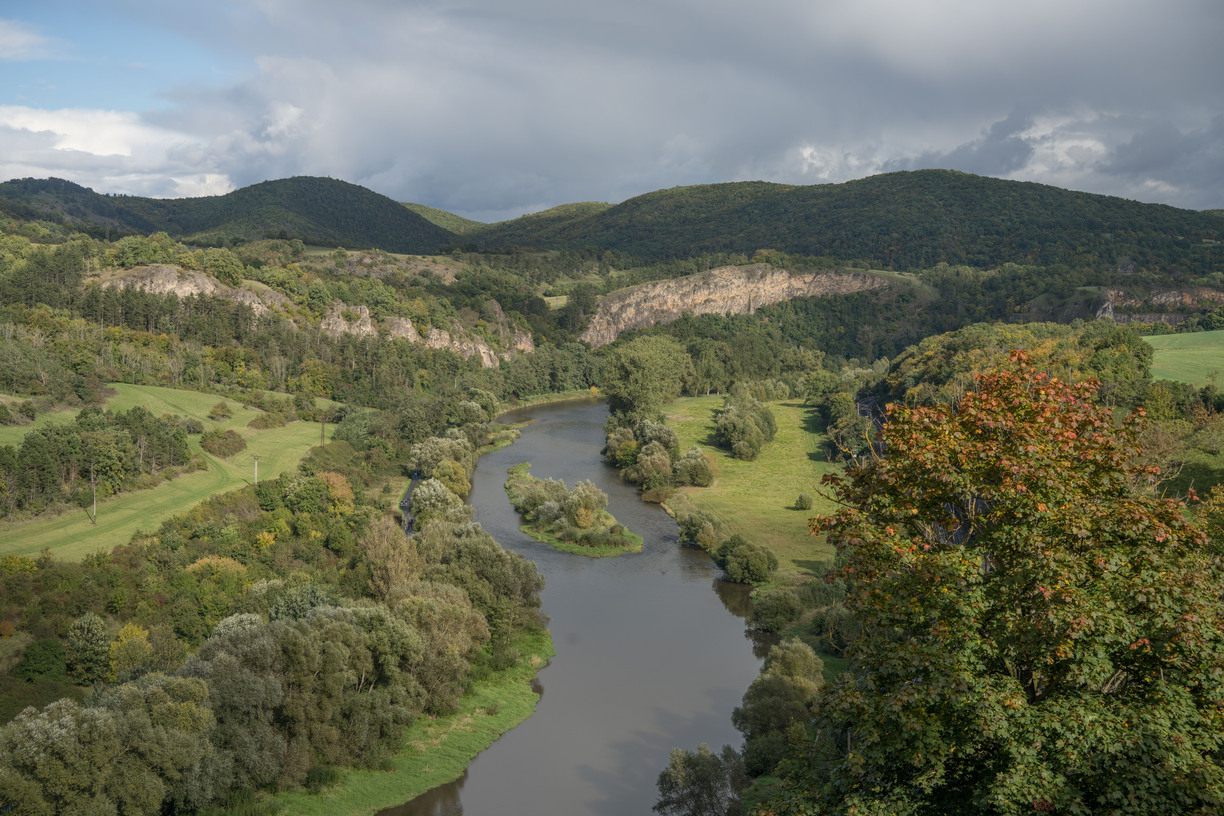
Images are here:
JTR_50 mm_E 50-400mm F4.5-6.3 A067_08819.jpg JTR_50 mm_E 50-400mm F4.5-6.3 A067_08820.jpg
Comment: Both images are from Tamron at 50mm. The first one at f/8 (number 8819), the second one at f/11 (number 8820). The f/11 image loses some sharpness due to diffraction compared to f/8.
Day 2 - Scene 5 - 100mm
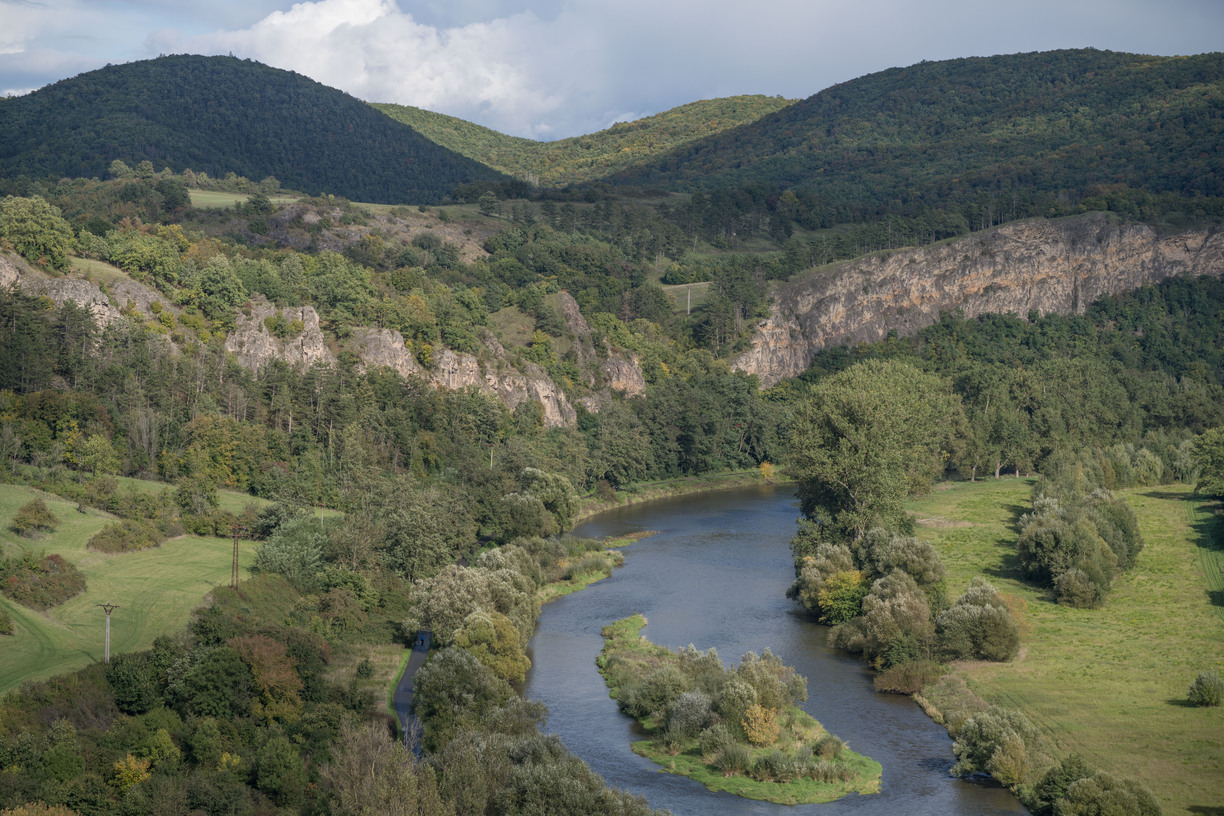
Images are here:
JTR_100 mm_FE 100-400mm F4.5-5.6 GM OSS_08855.jpg JTR_99 mm_E 50-400mm F4.5-6.3 A067_08873.jpg
Comments:
50-400 vs Sony 100-400 GM: The Sony GM is a tiny bit sharper in the left half of picture and near center, the Tamron is a tiny bit sharper in the right half of the picture except center.
Day 2 - Scene 5 - 200mm
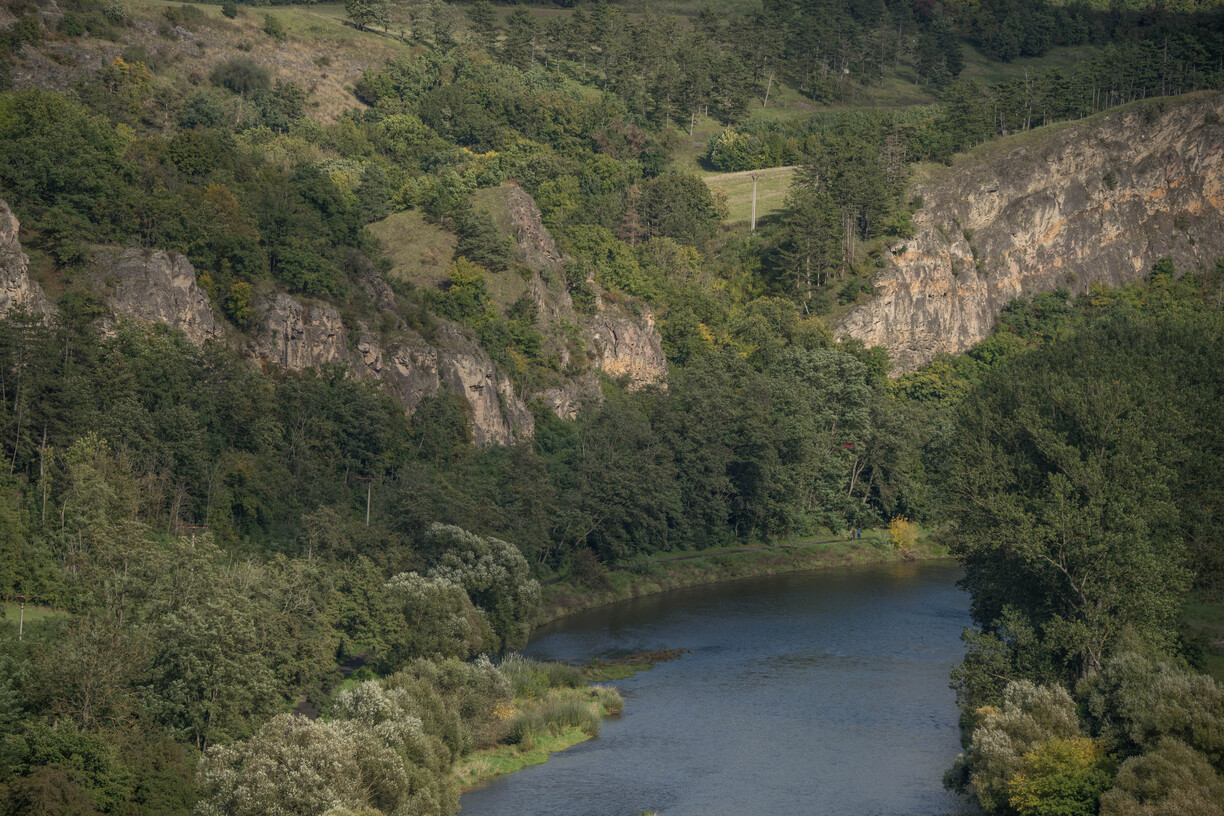
Images are here:
JTR_200 mm_E 50-400mm F4.5-6.3 A067_08904.jpg JTR_200 mm_FE 100-400mm F4.5-5.6 GM OSS_08863.jpg
50-400 vs Sony 100-400 GM: The Sony GM is a tiny bit sharper in the center, the Tamron is a tiny bit sharper outside of center.
Chromatic Aberration / Purple Fringing evaluation
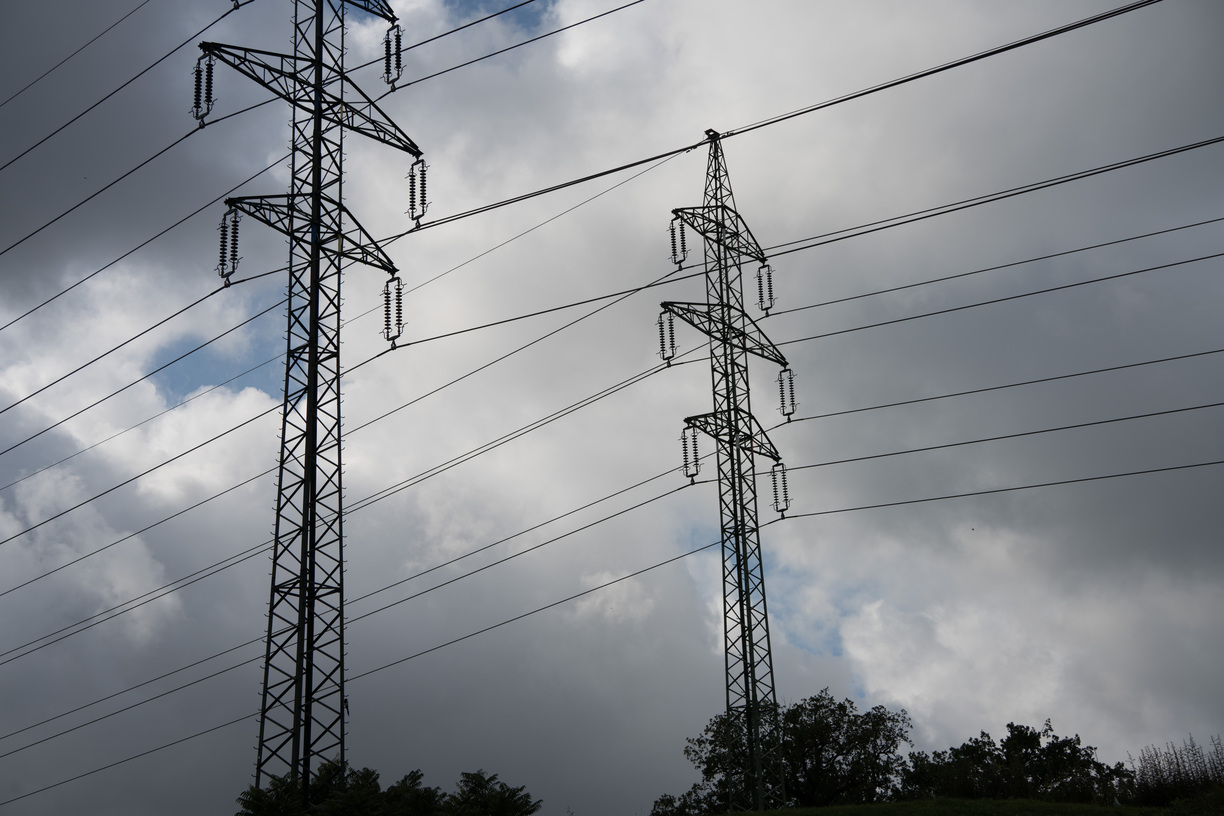
When I have seen one of first reviews showing full resolutions, a review from Marc Alhadeff that includes a Flickr gallery with full resolution pictures, I have noticed that the ones with wider focal lengths show some kind of lateral chromatic aberration or purple fringing.
Examples from Marc's Flickr album where I noticed it: on the roofs, many places (e.g. guy with grey shirt bottom left having purple hair), many places (e.g. pole for hanging a flag on the top right; anywhere white shirts meet dark ones, outside of center), branches on the right.
So I wondered if it will be a problem for my landscape use and less common cityscape use.
Scenes 1 to 7 did not show much problem but they did not contain many edges between super bright and very dark areas. I wanted to see how that behave in conditions where high contrast edges are present.
During testing I have often felt the CA was strong when looking through viewfinder on zoomed photo, but when I loaded photos into Lightroom the areas of aberration were not as saturated. The CA is not a problem when going over 100mm.
Here is a handheld picture taken at 50mm, f/8, 1/500s. Note: I have all lens compensations turned off in camera (some if them have impact on image quality in raw files unfortunately) so I can use controls in LR to use them as I need.
The image looks like this when loaded into LR: JTR07953-base.jpg
This looks good, the CA is basically not visible here.
Now add some normal processing (exposure +1.75, highlights -29, shadows +63): JTR07953-exposure-highlights-shadows.jpg
Now there is CA visible. If scene would have even higher contrast, I am sure the CA would appear higher too.
Let’s make it clear what we are looking at by increasing saturation very strongly (both vibrance and saturation +100): JTR07953-exposure-highlights-shadows-saturation.jpg
In center there is still almost no CA. Outside of center the CA is visible. It is directional. It is strongest on edges that are perpendicular to the line connecting the place with image center. It is visible both type of edges: dark to light (going in direction from image center) and light to dark. It is pink on the dark side of the dark to light edges and yellow over sky. It is blue on the dark side of light to dark edges. The blue part is more prominent than others.
Can I fix it? LR 5.7 that I use has two controls for CA: remove chromatic aberration checkbox and defringe tool where you can pick color range on the edge to desaturate such color on all edges and size of it. Two ranges are available to support both edge types.
Clicking on the checkbox the CA is reduced but a lot of blue aberration remains: JTR07953-exposure-highlights-shadows-saturation-ca.jpg
Using the defringe picker on blue edge without CA checkbox. Some red CA remains: JTR07953-exposure-highlights-shadows-saturation-defringe.jpg
Both corrections together. Most of the CA is removed now: JTR07953-exposure-highlights-shadows-saturation-ca-and-defringe.jpg
Unfortunately the one that remains cannot be selected further by defringe tool as it does not fit into remaining green hue range.
It looks like some software improvements could be beneficial here to remove it more. I guess that asymmetric appearance of this CA where blue is quite stronger than what is on the other edge does not fit well with LR’s CA removal algorithm. In a test with a test chart the CA was also not completely symmetrical for the left and right image side which could be also a problem for CA removal (maybe your lens will be more symmetrical in that). Maybe other raw processing software will handle it better.
One disadvantage of using LR’s defringe tool is that it may also desaturate edges were correction is not needed. I have seen things like gray leaves and gray lips in photos when using this correction.
Here is how it looks with all the corrections but with moderate saturation. It is great: JTR07953-exposure-highlights-shadows-moderate-saturation-ca-and-defringe.jpg
CA progression when going through increasing focal lengths (no exposure changes as camera overexposed sky enough on its own, no corrections; look near sides of the picture): 50mm 70mm 100mm 200mm.
Basically once you get to 100 mm, the CA is very minor problem and there is none at longer focal lengths at least when the contrast is not super high.
Actual use
This is a place I went to with Sony 20/1.8G, Tamron 50-400 and Sony GM 100-400. The goal was more to capture good pictures than to compare lenses. I took two sets of comparison pictures, however given the changing fog, they would be hard to interpret. My take on them is that Sony GM picture was a bit sharper in both when viewed at 200% on 32" UHD monitor, but it did not really matter. The key to get a good picture was rather everything else besides minute detail differences in sharpness. Album of processed pictures in UHD resolution is here.
All the pictures with 20G in the album are wide panoramas so the remaining wide pictures are from 50-400. I have not used 100-400 pictures for the album mostly because I had 50-400 on camera so much more, because of the zoom flexibility and the fact I did not have anything in between 20mm and wide end of the long zooms so having gap 20 to 50mm is better than 20 to 100mm.
For the 50-400, the full resolution variants of processed pictures are below. What I want to show is how the lens image quality interacts with quite high level of processing.
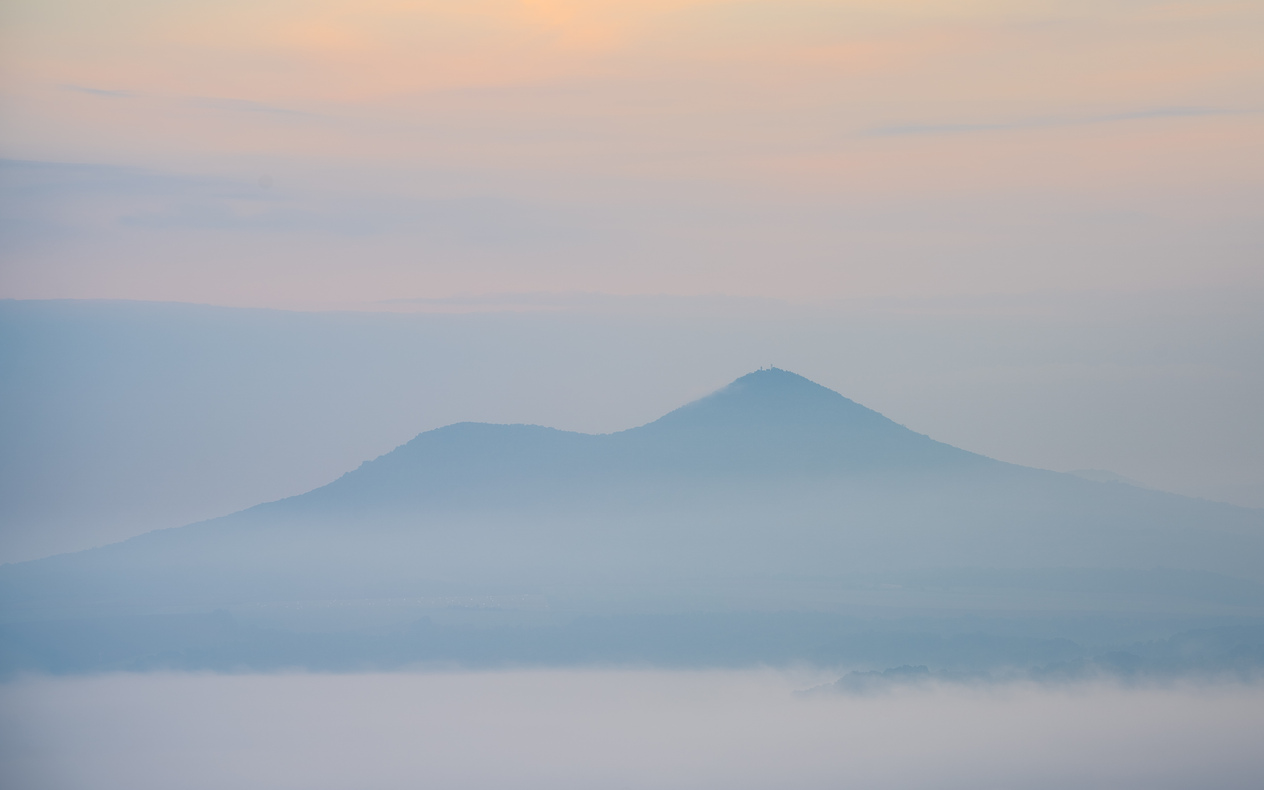
Image No. 3 (as in above album) full resolution. This processed image from the Tamron was captured at 151mm, f/8, 1/15s, ISO 100. Noise reduction using multiple images with same exposure, contrast adjusted a bit, cropped to improve composition.
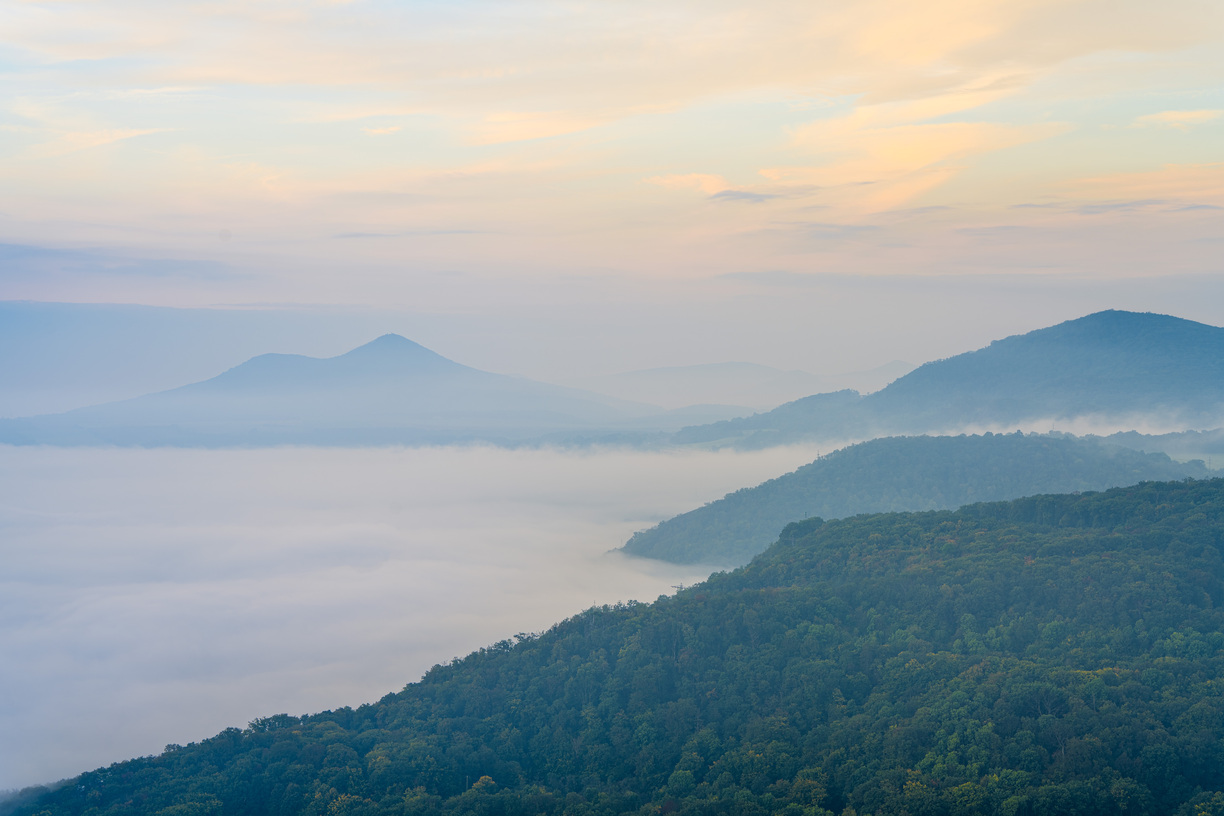
Image No. 4 full resolution. This processed image from the Tamron was captured at 68mm, f/8, 1/15s, ISO 100. Noise reduction using multiple images with same exposure, local and global contrast adjusted a lot. A comparison of crops showing single unprocessed image and the final one (as imported to LR) compared with processed version. Note how unprocessed image is relatively noisy in mid grays. That is common for A7Riv. If I would do the same level of adjustment without using multiple images, the noise would be much higher. In full resolution processed picture, you can see that some of the chromatic aberration is poping up on the left side bottom. There is some yellow and blue tint over some trees that meet whiter fog above them. I have not used any correction here and I guess it is not really a big problem.
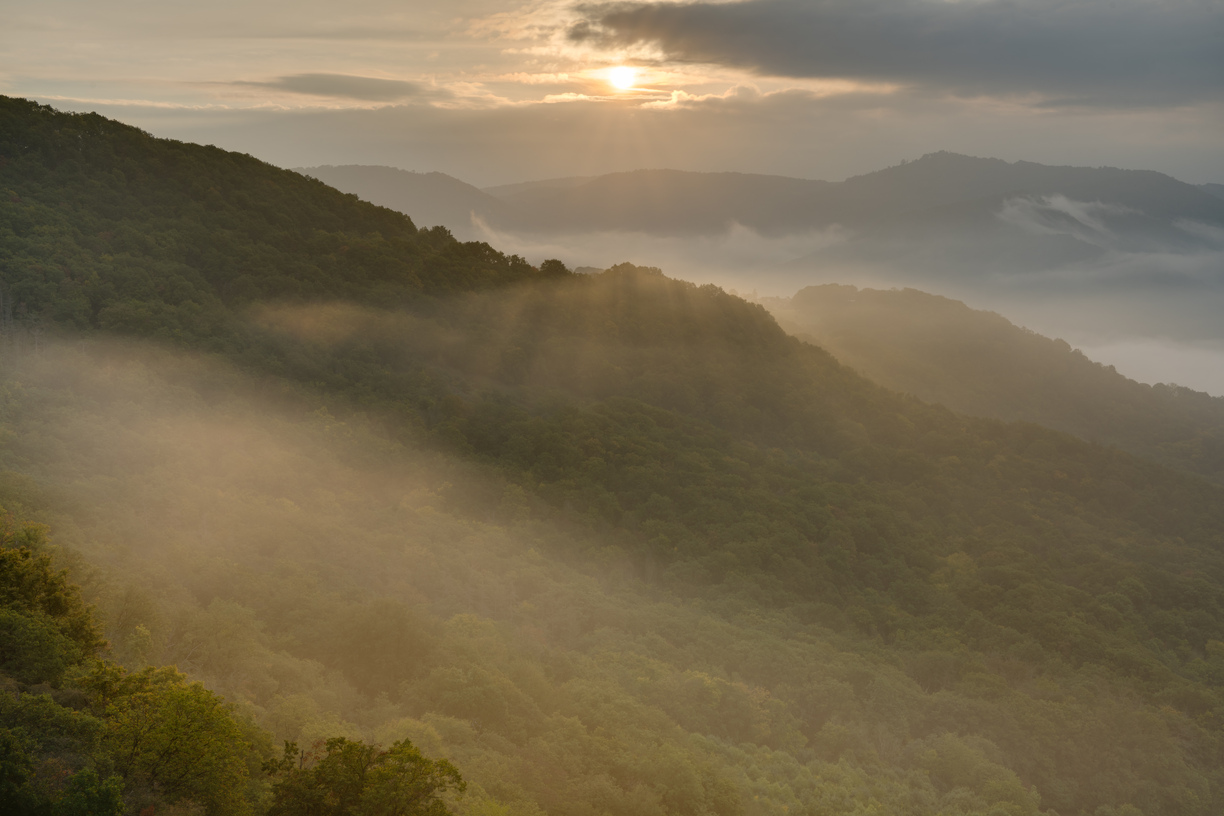
Image No. 6 full resolution. This is processed image from the Tamron was captured at 50mm, f/16. A 5 exposure bracketed image were used to produce it (using Enfuse and GIMP). I have used f/16 to get some sunstar effect. There is a weak one in the sky part of the image. The rays in the middle of the picture are caused by a different effect. There is some reduction of resolution due to diffraction, but less than I expected.
Moon as a test chart
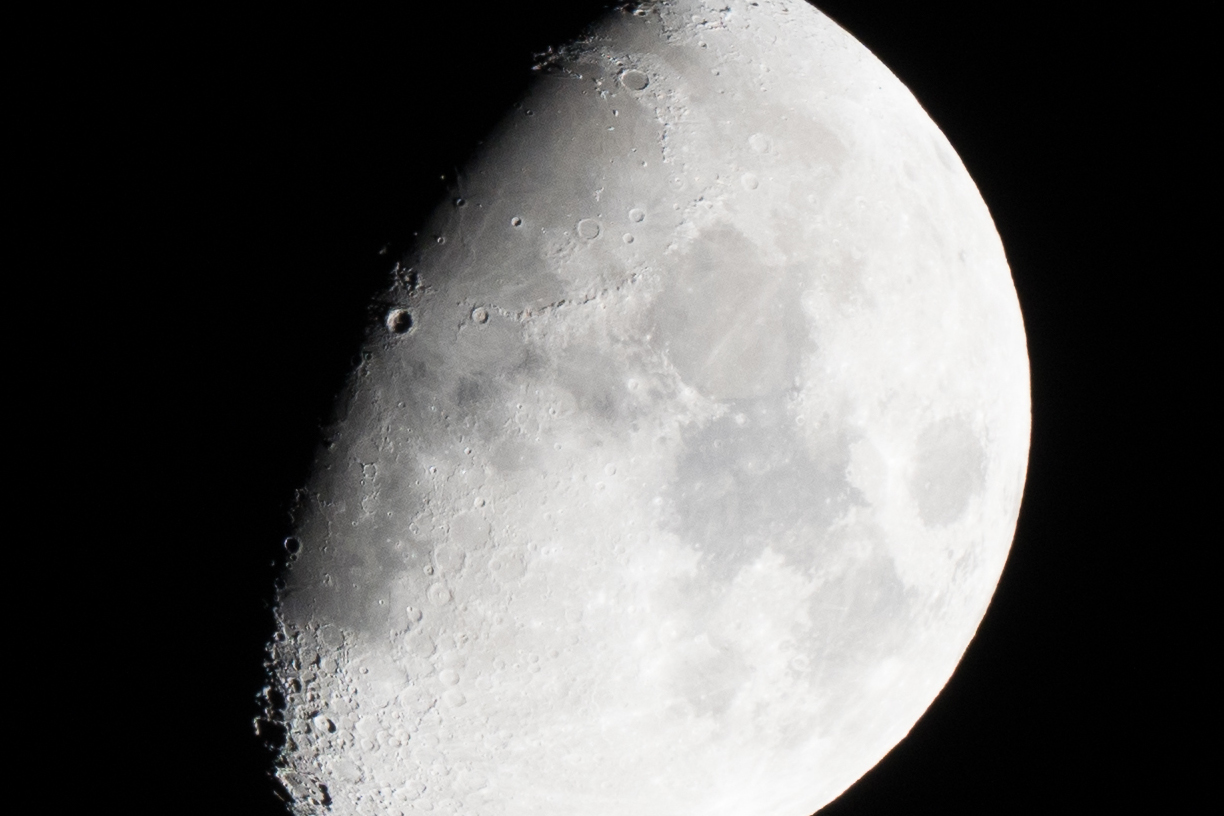
I like to shoot landscapes with Moon (link to my article on Moon with landscape photography). So was was very interested in seeing what is performance of the Tamron compared to other two long lenses on Moon shots before there will be conditions for a Moon with landscape shot which is usually around the full Moon.
I shot the Moon when it was slightly above half-lit. The Moon's altitude was 14° and it was 369333 km (distance between center of the Earth and Moon). Exposure was 1/100s, f/6.3, ISO 320 for all shots, electronic shutter.
Shooting Moon in landscape is harder than this because it is usually much lower above ground than here so the light goes through much more air with potential to distort it along the way. Even at this 14° altitude the air distortion it was quite visible as shot to shot variation. I have taken a lot of shots from which I have selected the ones below as best of the best in each series. I took extra series where the Moon was not in the center, but rather offset to see how would that work for Moon with landscape shot where Moon is often offset about that much. This crop overview shows Moon positions for each picture (the one with central position was shot in APS-C crop mode so that images take less space):

The resulting best images are here for center position: JTR_400 mm_E 50-400mm F4.5-6.3 A067_00941.jpg JTR_400 mm_100-400mm F5-6.3 DG OS HSM - Contemporary 017_00703.jpg JTR_400 mm_FE 100-400mm F4.5-5.6 GM OSS_00807.jpg
The resulting best images are here for left side position: JTR_400 mm_E 50-400mm F4.5-6.3 A067_01032.jpg JTR_400 mm_100-400mm F5-6.3 DG OS HSM - Contemporary 017_00777.jpg JTR_400 mm_FE 100-400mm F4.5-5.6 GM OSS_00868.jpg
The resulting best images are here for right side position: JTR_400 mm_E 50-400mm F4.5-6.3 A067_00983.jpg JTR_400 mm_100-400mm F5-6.3 DG OS HSM - Contemporary 017_00752.jpg JTR_400 mm_FE 100-400mm F4.5-5.6 GM OSS_00846.jpg
For the center position the Tamron and Sony GM are both excellent. They are hard to distinguish. I see a tiny bit more detail in Sony GM shot. The Sigma performed worse. I am not sure if worse performance was due to worse AF or just worse infinity focus performance. The Sigma produced quite sharp landscapes in center at 400mm. Usually a bit more sharper than the Tamron so I was surprised here a bit.
For the left side position all three lenses show slightly worse performance than in center. The Sigma and the Tamron have both similar performance and it is tiny bit worse than the Sony GM.
For the right side position all three lenses show slightly worse performance than in center. The Sigma is the worst of the three lenses but still acceptable for many uses. The Sony GM is the best, but the Tamron is very close in performance to it.
Overall the Sony GM had better performance here, but the Tamron was close to it. For a solitary Moon shot, shoot with the Moon in the center and it will be fine. For Moon-landscapes, you will be shooting close to the ground so air distortion and also a depth of field will be your main problems, not a lens sharpness.
Moon with landscape

A note on performance on the picture with the Moon: This is basically the only shot from longer sequence as the Moon did not show up much longer through the clouds. All other shots did not show structure on the Moon surface at all due to air conditions in that cloud. Three +-2EV exposures at ISO 800 where used for final image. The image is highly processed in LR and GIMP. I have planned to do some multi-image noise reduction on the ground part of the image from multiple shots (besides the there different exposures), but not all shots were sharp due to variation of wind and focus variation (I usually lock focus for this but I did not this time). Remaining shots usable for this also showed a movement of trees so end result was kind of worse than just using primary three exposures. There is some CA visible on the hill-air transition, but it is not strong. CA reduciton in LR did not correct it much. Defringe in LR did correct it in some areas but it made other areas worse so I did not use it.
Conclusion for landscape use
You can access so many landscape shots in full resolution in this review that you can make your own conclusion. But if you are interested in mine which is also based on some other pictures that did not make it into the review and overall subjective feeling, here it is.
The Tamron 50-400 is 8x zoom that makes excellent compromise between image quality and flexibility of the focal length range. So my recommendation is mainly based on whether you will have some use for the whole range. If you would be using just 100-400mm part, then the 100-400 lenses from Sony and Sigma will probably offer something more. The Sony 100-400 will offer better central resolution and less chromatic aberration. The both old and new Sigmas 100-400 are cheaper. The measured Sigma 100-400 Canon-mount often was a tiny bit sharper in center too but often worse on sides so it depends where you need that sharpness.
If you have a lower megapixel body, like 24MP, I don’t think you will see much difference in sharpness between Sony GM and Tamron at f/8. On higher resolution body like my 60MP A7Riv, there are differences. Often (though not always) Sony GM was better in center and Tamron was better in corners. I found that surprising. I would expect the 8x zoom to have less even sharpness over the image frame. But maybe it is because Sony GM is also optimized for use with teleconverter. That is something that Tamron did not care about as their lenses cannot support it on E-mount. There is another impact from field curvature that is at play here. The measured lenses may differ in field curvature. When I measured the Tamron 50-400 and two 100-400 on a test chart I was disappointed by amount of field curvature the Tamron was showing at 400mm compared to two other lenses (it was ok at 100 and 200mm). But things may be very different at 3 meters and at few kilometers. That is also why the test chart results are not published in this review. In Day 2 Scene 1 - 400mm I was playing with manual focus adjustments. I captured two images that show the field curvature with the Tamron. Usually, when using AF-S on center with the Tamron on my A7Riv, I was getting something that was compromise between center and corner sharpness compared to the two extremes. Unfortunately, focus stacking is quite hard at these long focal lengths because of distortion caused by wind shaking the lens during exposure (which has more impact when using electronic shutter with slow scan time, but that one does not shake the lens which is also valuable) and distortion from air heat. I assume that other lenses have some field curvature there as well. At least that could explain weaker sides on both 100-400.
Chromatic aberration may be a problem on high contrast subjects at wider focal lengths (mostly below 100 mm) but software corrections are able to reduce it somewhat even if you increase saturation and brighten shadows quite a lot.